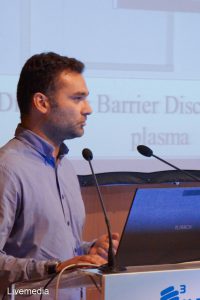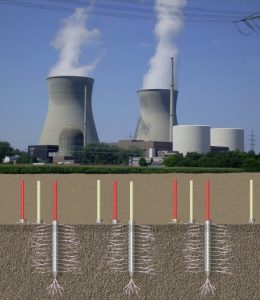1st Call for H.F.R.I. Research Projects to support Post-Doctoral Researchers
Agathangelidis Andreas, Principal Investigator of the research project entitled: «CLLon – Immunogenetic and functional analysis of the B-cell receptor in Monoclonal B-cell Lymphocytosis (MBL) and Chronic Lymphocytic Leukemia (CLL) : implications for disease ontogeny»

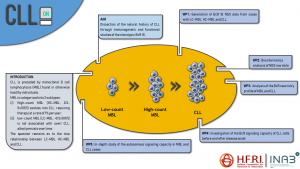 CLLon aims at dissecting the processes related to the B-cell receptor immunoglobulin (BcR IG) that occur throughout the natural history of CLL and contribute to disease ontogeny and evolution, through in-depth immunogenetic and functional studies of the clonotypic BcR IG.
CLLon aims at dissecting the processes related to the B-cell receptor immunoglobulin (BcR IG) that occur throughout the natural history of CLL and contribute to disease ontogeny and evolution, through in-depth immunogenetic and functional studies of the clonotypic BcR IG.
To reach solid conclusions, the study group will include individuals with MBL of both subtypes: (i) low-count MBL (LC-MBL) and (ii) high-count MBL (HC-MBL), as well as patients with CLL with distinct clinical courses, ranging from ultra-stable (asymptomatic for at least 10 years) to rapidly progressive.
Aggelopoulos Christos, Principal Investigator of the research project entitled: «In Situ Soil Remediation by Non-Thermal Plasma»
The goal of the project is to examine the applicability of non-thermal plasma (NTP) discharge techniques as advanced oxidation methods for the resource-efficient, sustainable and cost-effective in-situ remediation of soil contaminated by recalcitrant organic pollutants. Studies of plasma discharge techniques will be performed on lab-scale reactors by testing the possibility to remove several classes of recalcitrant / persistent organic pollutants (e.g. pesticides, chlorinated solvents, PAH) from two specific soil types. Plasma discharge reactors will be designed, constructed and tested for the in situ treatment of polluted soils by NTP. Parametric studies with respect to soil properties, pollutant type/concentration, moisture content, oxidant type, and flow conditions will be performed.
Akoumnianaki Antonia, Principal Investigator of the research project entitled: «Delineating molecular mechanisms of PHAGOsome dysFUNction underlying Sepsis Immunosuppression: A Roadmap to Personalized Medicine in Sepsis»
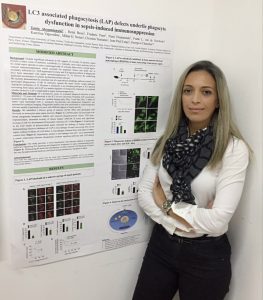
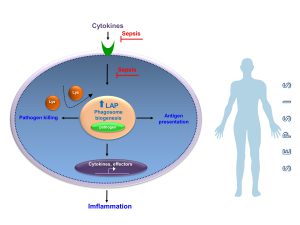 Despite significant advances in life support of critically ill patients, sepsis remains a major cause of mortality worldwide. Recently, it has been realized that many patients who survive the initial sepsis episode, enter a prolonged state of immune deactivation, termed sepsis-induced immunosuppression, which accounts for treatment failure and death due to secondary infection(s) by opportunistic bacterial and fungal pathogens. While the clinical impact of sepsis immunosuppression is well recognized, the underlying mechanisms remain unknown. Furthermore, the failure of over 100 clinical trials on sepsis immunotherapy has been largely attributed to the complexity of the underlying molecular mechanisms of the disease in humans and the lack of reliable biological measures that discriminate patients with immune deactivation.
Despite significant advances in life support of critically ill patients, sepsis remains a major cause of mortality worldwide. Recently, it has been realized that many patients who survive the initial sepsis episode, enter a prolonged state of immune deactivation, termed sepsis-induced immunosuppression, which accounts for treatment failure and death due to secondary infection(s) by opportunistic bacterial and fungal pathogens. While the clinical impact of sepsis immunosuppression is well recognized, the underlying mechanisms remain unknown. Furthermore, the failure of over 100 clinical trials on sepsis immunotherapy has been largely attributed to the complexity of the underlying molecular mechanisms of the disease in humans and the lack of reliable biological measures that discriminate patients with immune deactivation.
Alexakis Dimitrios, Principal Investigator of the research project entitled: «Development of an integrated 5-Dimensional space-based methodology for Assessing and modeling the Response of Erosion dynamics to land use and climatic changes in Mediterranean watersheds»
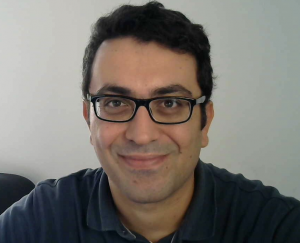
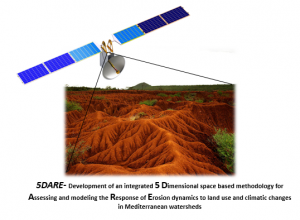 Soil erosion is as a major environmental problem since it seriously threatens natural resources, agriculture and the environment. 5DARE project will assess the impacts of a changing climate, land use, soil moisture, hydrology and vegetation cover, on the quantity of erosion processes in two catchments in the island of Crete / Greece. Modelling techniques will be used to project the influence of changes of above-mentioned factors on the major determinants of erosion processes, at various time and space scales, in the near and far future. Regional climate scenarios will provide the essential information on shifting precipitation and temperature patterns, and will feed into erosion models in order to assess the changes in seasonality, amount, and incidence of extreme events in the catchment areas.
Soil erosion is as a major environmental problem since it seriously threatens natural resources, agriculture and the environment. 5DARE project will assess the impacts of a changing climate, land use, soil moisture, hydrology and vegetation cover, on the quantity of erosion processes in two catchments in the island of Crete / Greece. Modelling techniques will be used to project the influence of changes of above-mentioned factors on the major determinants of erosion processes, at various time and space scales, in the near and far future. Regional climate scenarios will provide the essential information on shifting precipitation and temperature patterns, and will feed into erosion models in order to assess the changes in seasonality, amount, and incidence of extreme events in the catchment areas.
Andria Maria, Principal Investigator of the research project entitled: «Learning, teaching and learning to teach Greek as a second/foreign language: evidence from different learning contexts (letegr2)»
 Given the fact that there is nowadays a growing need for learning Greek as Second Language (SL) /Foreign Language (FL), examining firstly how Greek can be taught in a more efficient way for different target groups of learners, and adequately training and certifying teachers of Greek in second, are issues of great importance for our community. To address these issues, the current project sets three interrelated and complementary studies, meant to approach the area of Modern Greek as a SL/FL from different perspectives, by taking into account all parties involved in the learning process. More specifically, Study 1 aims at analyzing classroom interaction during the acquisition of Greek in both SL and FL context. Study 2 aims to explore the gains that different learner groups obtain in terms of linguistic outcomes, pragmatic competence development and sociocultural awareness, over the period of instruction and whether individual factors have a relationship with these gains.
Given the fact that there is nowadays a growing need for learning Greek as Second Language (SL) /Foreign Language (FL), examining firstly how Greek can be taught in a more efficient way for different target groups of learners, and adequately training and certifying teachers of Greek in second, are issues of great importance for our community. To address these issues, the current project sets three interrelated and complementary studies, meant to approach the area of Modern Greek as a SL/FL from different perspectives, by taking into account all parties involved in the learning process. More specifically, Study 1 aims at analyzing classroom interaction during the acquisition of Greek in both SL and FL context. Study 2 aims to explore the gains that different learner groups obtain in terms of linguistic outcomes, pragmatic competence development and sociocultural awareness, over the period of instruction and whether individual factors have a relationship with these gains.
Antonopoulou Georgia, Principal Investigator of the research project entitled: «Application of microbial electrochemical technologies towards advanced biofuels production»
 The META-FUELs project aspires to identify, develop and evaluate, in a comparative way, low cost, flexible and highly efficient technologies for the production of HyMet (hydrogen enriched methane) of stable quality, focusing mainly on the combination of Microbial Electrochemical Technologies (MET) with the Fermentative Microbial Processes (FMP). This will be achieved via development and application of innovative MET for hydrogen and methane production, coupled with the well-established technologies of Dark Fermentation (DF) and Anaerobic Digestion (AD), for hydrogen and biogas production, respectively. Great attention will be paid on the integration of the individual processes, since the hydrogen and methane producing reactors will be efficiently coupled directly.
The META-FUELs project aspires to identify, develop and evaluate, in a comparative way, low cost, flexible and highly efficient technologies for the production of HyMet (hydrogen enriched methane) of stable quality, focusing mainly on the combination of Microbial Electrochemical Technologies (MET) with the Fermentative Microbial Processes (FMP). This will be achieved via development and application of innovative MET for hydrogen and methane production, coupled with the well-established technologies of Dark Fermentation (DF) and Anaerobic Digestion (AD), for hydrogen and biogas production, respectively. Great attention will be paid on the integration of the individual processes, since the hydrogen and methane producing reactors will be efficiently coupled directly.
Apostolidou Anna, Principal Investigator of the research project entitled: «Ethnography and/as hypertext fiction: representing surrogate motherhood»
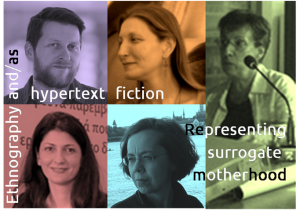
 The research project employs the emerging social practice of surrogate motherhood as a focal point in order to address digital ethnographic textuality differently. Its aim is threefold: firstly, it attempts an ethnographic study of surrogate motherhood, which will be qualitatively approached via participant observation and interviewing ‘pairs of mothers’ (the surrogate and the social mother). Secondly, it seeks to interrogate the practices of ethnographic writing by proposing that the final text of research findings may be presented in a form of fiction writing, namely short stories. Thirdly, it supports the opening up of the ethnographic text in new forms of mediation, by attempting the creation of an ethnographic hypertext with links to multimedia material (papers, videos & photos, interview recordings and excerpts) that will facilitate the non-linear reading of fictional ethnography and its access by non-expert readers.
The research project employs the emerging social practice of surrogate motherhood as a focal point in order to address digital ethnographic textuality differently. Its aim is threefold: firstly, it attempts an ethnographic study of surrogate motherhood, which will be qualitatively approached via participant observation and interviewing ‘pairs of mothers’ (the surrogate and the social mother). Secondly, it seeks to interrogate the practices of ethnographic writing by proposing that the final text of research findings may be presented in a form of fiction writing, namely short stories. Thirdly, it supports the opening up of the ethnographic text in new forms of mediation, by attempting the creation of an ethnographic hypertext with links to multimedia material (papers, videos & photos, interview recordings and excerpts) that will facilitate the non-linear reading of fictional ethnography and its access by non-expert readers.
Apostolidou Ioanna, Principal Investigator of the research project entitled: «Development of an Innovative Traceability System for Controlling Food Safety in Sustainable AgriFood Supply Chains»

 Food is vulnerable to a range of hazards through the supply chain and possible failures can affect product safety. Moreover, new hazards and risks are emerging and often related to accidental or intentional contamination. The main goal of the current proposal is to develop an innovative suite of Internet of Things (IoT) – enabled sensing technologies data analytics and an original integrated Decision Support System (DSS). This novel system will investigate the key stakeholders through the supply chain, offering a multidimensional assessment and financial analysis.
Food is vulnerable to a range of hazards through the supply chain and possible failures can affect product safety. Moreover, new hazards and risks are emerging and often related to accidental or intentional contamination. The main goal of the current proposal is to develop an innovative suite of Internet of Things (IoT) – enabled sensing technologies data analytics and an original integrated Decision Support System (DSS). This novel system will investigate the key stakeholders through the supply chain, offering a multidimensional assessment and financial analysis.
Arbi Marina, Principal Investigator of the research project entitled: «From Two to Many: Geminin Family Members Control Centriole Amplification, Cilia Formation and Pathology »

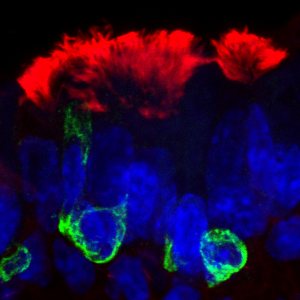 Maintenance of correct centriole/centrosome numbers is essential for genome stability. The centrosome duplication cycle must occur in concert with the chromosome cycle. Aberrations both in the genome content and in centrosome numbers can lead to genomic inconsistency. However, such aberrations can also be part of the normal life-cycle of specific cell types. Multiciliated cells best exemplify the deviation from a normal centriole cycle, as they exit the cell cycle and generate hundreds of centrioles per cell, breaking the spatiotemporal rules of generation of only one new centriole next to the parental centriole, in each cell cycle. Recent findings suggest that a novel group of proteins, named Geminin superfamily, control this cell fate decision. In this study, we aim to elucidate how Geminin family members contribute to the normal centriole cycle and how they define, at the right time, a cell fate where multiple rounds of centriole duplication take place.
Maintenance of correct centriole/centrosome numbers is essential for genome stability. The centrosome duplication cycle must occur in concert with the chromosome cycle. Aberrations both in the genome content and in centrosome numbers can lead to genomic inconsistency. However, such aberrations can also be part of the normal life-cycle of specific cell types. Multiciliated cells best exemplify the deviation from a normal centriole cycle, as they exit the cell cycle and generate hundreds of centrioles per cell, breaking the spatiotemporal rules of generation of only one new centriole next to the parental centriole, in each cell cycle. Recent findings suggest that a novel group of proteins, named Geminin superfamily, control this cell fate decision. In this study, we aim to elucidate how Geminin family members contribute to the normal centriole cycle and how they define, at the right time, a cell fate where multiple rounds of centriole duplication take place.
Bourogiannis Giorgos, Principal Investigator of the research project entitled: «Cypriot Connectivity in the Mediterranean from the Late Bronze to the end of the Classical period: An Interdisciplinary Approach»
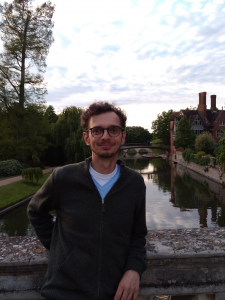 The ‘Cypriot Connectivity in the Mediterranean from the Late Bronze to the end of the Classical period: An Interdisciplinary Approach’ research project, aims at the study of Cypriot presence and activity in the Mediterranean between the Late Bronze Age, a time of great prosperity for ancient Cyprus, and the end of the Classical period, when the Cypriot city-kingdoms, the island’s political institution par excellence, get abolished. This long period of c. 13 centuries (1650–310 BC) is characterised by numerous historic facts that influenced not just Cyprus but also the Mediterranean as a whole.
The ‘Cypriot Connectivity in the Mediterranean from the Late Bronze to the end of the Classical period: An Interdisciplinary Approach’ research project, aims at the study of Cypriot presence and activity in the Mediterranean between the Late Bronze Age, a time of great prosperity for ancient Cyprus, and the end of the Classical period, when the Cypriot city-kingdoms, the island’s political institution par excellence, get abolished. This long period of c. 13 centuries (1650–310 BC) is characterised by numerous historic facts that influenced not just Cyprus but also the Mediterranean as a whole.
This multitude of historical phases gets ‘translated’ into an equal multitude of material and written evidence, comprising of archaeological data, inscriptions and, from the 6th century BC onwards, coins. The principal goal of the research project is to comparatively and comprehensively study Cypriot archaeological, epigraphic and numismatic evidence, from carefully-selected case studies in order to examine how Cypriot presence and activity at these selected areas get attested, develop and change over time.
Charalambidis Georgios, Principal Investigator of the research project entitled: «Development of Bio-Inspired Photocatalytic Systems for H2 Production and CO2 Reduction»

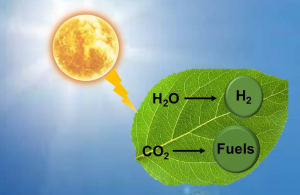 The decrease of total available reserves of fossil fuels along with the environmental problems caused by increased CO2 emissions, have turned research community interest towards developing catalytic systems which convert solar energy into exploitable fuels. Hydrogen is considered as the “ideal” fuel because its combustion with oxygen produces water and heat as the only byproducts. Therefore, the preparation of efficient catalytic systems that exploit solar energy for H2 production and CO2 reduction, can contribute to an ultimate green sustainable development of our planet, solving energy and environmental issues.
The decrease of total available reserves of fossil fuels along with the environmental problems caused by increased CO2 emissions, have turned research community interest towards developing catalytic systems which convert solar energy into exploitable fuels. Hydrogen is considered as the “ideal” fuel because its combustion with oxygen produces water and heat as the only byproducts. Therefore, the preparation of efficient catalytic systems that exploit solar energy for H2 production and CO2 reduction, can contribute to an ultimate green sustainable development of our planet, solving energy and environmental issues.
The target of the proposed project is the design and development of photo-catalytic systems for the utilization of solar energy in two separate ways: i) the production of hydrogen (H2) from water, and ii) the reduction of carbon dioxide (CO2) into useful fuel-products.
Chatzigeorgiou Giorgos, Principal Investigator of the research project entitled: «Establishment of a Monitoring Network and a web-based platform of Non-Indigenous Species in Major Ports of Greece – AlienPorts»
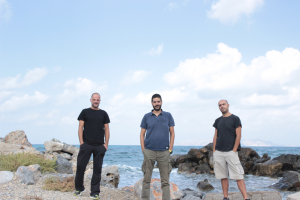
 Alien species significantly change the structure of Mediterranean habitats by restricting the distribution of native species, degrading the local biodiversity and altering the habitat functioning. AlienPort project has as a target to create a monitoring network among the Major Ports of Greece and a web-based platform including information for NIS located in the ports and their distribution through Greek waters. In addition, this project will propose a sampling protocol specially focused on NIS species in port. Project results will be available to the port and management authorities and will potentially be used as a base for developing management tools.
Alien species significantly change the structure of Mediterranean habitats by restricting the distribution of native species, degrading the local biodiversity and altering the habitat functioning. AlienPort project has as a target to create a monitoring network among the Major Ports of Greece and a web-based platform including information for NIS located in the ports and their distribution through Greek waters. In addition, this project will propose a sampling protocol specially focused on NIS species in port. Project results will be available to the port and management authorities and will potentially be used as a base for developing management tools.
Chatzinikolaou Evangelia, Principal Investigator of the research project entitled: «Effects of Climate Change and Ocean acidification on marine gastropods»

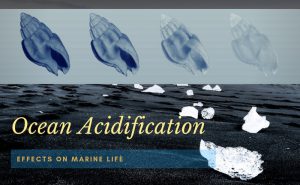 Anthropogenic activities, such as fossil fuel combustion and deforestation, are responsible for the increase of atmospheric carbon dioxide, which in turn is absorbed by the oceans causing changes in the seawater carbonate chemistry. Ocean acidification (low pH) decreases the calcium carbonate saturation states in seawater, thus inhibiting calcification rates in shell-forming marine organisms. Elevated carbon dioxide may have additional sublethal impacts on organismal, developmental and physiological levels and as a result can significantly suppress the abundance and diversity of species. This study will use an integrated multi-disciplinary approach in order to investigate morphological, physiological, behavioral, chemical and molecular responses of selected gastropod species on a complementary basis. A long-term experiment is scheduled in order to investigate the direct and indirect effects of low pH and increased temperature and also to reveal possible adaptations of the organisms.
Anthropogenic activities, such as fossil fuel combustion and deforestation, are responsible for the increase of atmospheric carbon dioxide, which in turn is absorbed by the oceans causing changes in the seawater carbonate chemistry. Ocean acidification (low pH) decreases the calcium carbonate saturation states in seawater, thus inhibiting calcification rates in shell-forming marine organisms. Elevated carbon dioxide may have additional sublethal impacts on organismal, developmental and physiological levels and as a result can significantly suppress the abundance and diversity of species. This study will use an integrated multi-disciplinary approach in order to investigate morphological, physiological, behavioral, chemical and molecular responses of selected gastropod species on a complementary basis. A long-term experiment is scheduled in order to investigate the direct and indirect effects of low pH and increased temperature and also to reveal possible adaptations of the organisms.
Chatzinikolaou Georgia, Principal Investigator of the research project entitled: «DNA damage & histone variants in development & disease»
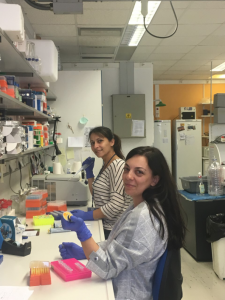
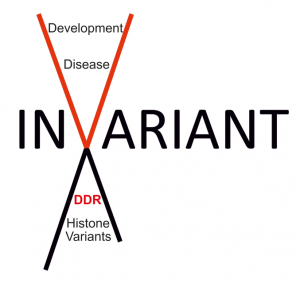 Mammalian cells rely on genome maintenance, chromatin architecture and transcription to organize, maintain and utilize their genomes. In turn, such complex biological processes depend on the timely, orchestrated action of ATP-dependent nucleosome remodeling and basal transcription factors, the myriad of histone post-translational modifications and the exchange of canonical histones for histone variants. Together, these multifaceted events are known to dynamically modulate chromatin accessibility for the fine-tuning of gene expression programs during development or with disease onset. In accordance, the cell’s DNA damage signaling and repair machineries also operate on a chromatinized substrate to detect, repair and restore damaged DNA, maintaining genome stability. For bulky helix-distorting DNA lesions, such as the main ultraviolet (UV)-induced photoproducts and numerous bulky chemical adducts, the major repair mechanism is the evolutionarily conserved nucleotide excision repair (NER) pathway.
Mammalian cells rely on genome maintenance, chromatin architecture and transcription to organize, maintain and utilize their genomes. In turn, such complex biological processes depend on the timely, orchestrated action of ATP-dependent nucleosome remodeling and basal transcription factors, the myriad of histone post-translational modifications and the exchange of canonical histones for histone variants. Together, these multifaceted events are known to dynamically modulate chromatin accessibility for the fine-tuning of gene expression programs during development or with disease onset. In accordance, the cell’s DNA damage signaling and repair machineries also operate on a chromatinized substrate to detect, repair and restore damaged DNA, maintaining genome stability. For bulky helix-distorting DNA lesions, such as the main ultraviolet (UV)-induced photoproducts and numerous bulky chemical adducts, the major repair mechanism is the evolutionarily conserved nucleotide excision repair (NER) pathway.
Chioti Eirini, Principal Investigator of the research project entitled: «Athenian Presence in Thrace through the Diffusion of Attic Painted Pottery (6th-4th c. BCE)»
The object of this project is the examination of Athenian presence in Thrace from the 6th to the 4th century BCE through the study of commercial and social networks developed in the area. Using the published attic painted pottery found in different places in ancient Thrace (settlements, burials, sanctuaries) as a basic tool, we are going to study the shapes, the iconographic themes and the use of attic vases in the local society. Thus, we are going to obtain a sample picture of the luxurious attic pottery in Thrace, of the commercial roads through which it was disseminated but also of the local preferences. The study of the material will enable us to examine under quantitative and quality parameters, the role of attic painted vases both in coastal and inland Thrace and we will take under consideration space and time in the individual stages of analysis.
Coutsinas Nadia, Principal Investigator of the research project entitled: «Spatial Dynamics and Settlement Patterns in Eastern Crete from the Classical to the Venetian Period»
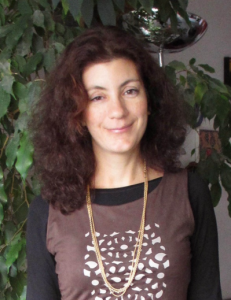
 Through an interdisciplinary approach (combining a careful reading of historical and archaeological evidence and the spatial analysis offered by new technologies in archaeological research), this project will attempt to highlight the developments of the settlement patterns in Eastern Crete from the Classical to the Venetian period. During more than a millennium, from the 5th c. B.C. to the 17th c. A.D., Crete has known several political and administrative systems. The main goal is to track the transition from ancient autonomous city-states to the medieval dependent cities and villages.
Through an interdisciplinary approach (combining a careful reading of historical and archaeological evidence and the spatial analysis offered by new technologies in archaeological research), this project will attempt to highlight the developments of the settlement patterns in Eastern Crete from the Classical to the Venetian period. During more than a millennium, from the 5th c. B.C. to the 17th c. A.D., Crete has known several political and administrative systems. The main goal is to track the transition from ancient autonomous city-states to the medieval dependent cities and villages.
Considering the extended chronological frame of the project, it seemed more effective to focus on a specific part of the island, the eastern one. Geographically, Eastern Crete is separated from the rest of the island by the Dikti, or Lasithian mountains, forming a regional unit that has always, in history, been considered isolated and thus defining a sort of enclave on the island.
Dasyra Kalliopi, Principal Investigator of the research project entitled: «Do massive winds induced by black-hole jets alter galaxy evolution? Evidence from galaxies in the Atacama Large Millimeter Array (ALMA) Radio-source Catalog»

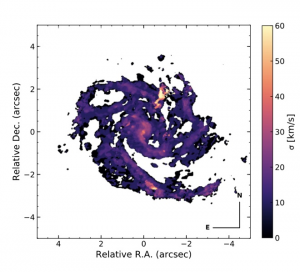

A major recent discovery, is that supermassive black holes expel and heat large amounts of molecular gas in galaxies, which is responsible for star formation. Plasma jets and radiation pressure, which are related to the infall of matter onto black holes, can accelerate gas beyond escape velocity; resulting winds often have mass flow rates exceeding star formation rates in their galaxies. But are these phenomena significant enough to affect galaxy sizes? To answer this question, we will systematically exploit molecular (CO) line observations from the largest mm interferometer today, the Atacama Large Millimeter Array (ALMA).
Demis Sotiris, Principal Investigator of the research project entitled: «A Systematic investigation of the Durability of Textile Reinforced Mortars (TRM) and of TRM/RC elements under harsh environments»
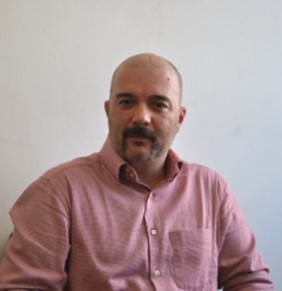
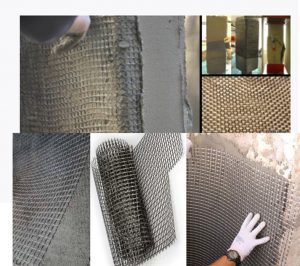 The increasing need for retrofit and repair of existing reinforced concrete (RC) structures, has urged the international research community to develop innovative structural components and techniques, aiming to increase their strength and/or deformation capacity. In this direction, innovative composite materials, comprised of high strength textiles in inorganic matrices, named textile reinforced mortars (TRM), have been introduced as an alternative to the traditionally used FRP systems, in the field of strengthening and seismic retrofitting. Since on any strengthening application, the TRM will be applied on the external surface of an existing RC element, exposed to a particular harsh environment (e.g. chlorides, carbon dioxide, etc.), the long-term performance of both the TRM and the TRM strengthened RC structure (noted as “TRM/RC”) should be considered, in terms of structural durability. Even though research on TRM in terms of strengthening applications and techniques is currently at quite an advanced stage, limited data are available in literature concerning TRM durability and long-term performance in various exposures.
The increasing need for retrofit and repair of existing reinforced concrete (RC) structures, has urged the international research community to develop innovative structural components and techniques, aiming to increase their strength and/or deformation capacity. In this direction, innovative composite materials, comprised of high strength textiles in inorganic matrices, named textile reinforced mortars (TRM), have been introduced as an alternative to the traditionally used FRP systems, in the field of strengthening and seismic retrofitting. Since on any strengthening application, the TRM will be applied on the external surface of an existing RC element, exposed to a particular harsh environment (e.g. chlorides, carbon dioxide, etc.), the long-term performance of both the TRM and the TRM strengthened RC structure (noted as “TRM/RC”) should be considered, in terms of structural durability. Even though research on TRM in terms of strengthening applications and techniques is currently at quite an advanced stage, limited data are available in literature concerning TRM durability and long-term performance in various exposures.
Denaxa Myrto, Principal Investigator of the research project entitled: «Mechanisms controlling the maturation of distinct interneuron population»
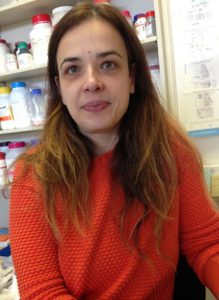
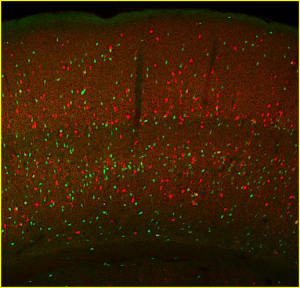 The balance between excitation and inhibition (E-I balance) is essential for the generation of optimal neural circuit activity patterns and brain function. Cortical interneurons (cINs) represent the main source of inhibition for excitatory projection neurons (PNs) in the pallium (cortex), and changes in the number or activity of cINs have been associated with neurodevelopmental and neuropsychiatric disorders, such as epilepsy, schizophrenia and autism spectrum (ASD) disorders.
The balance between excitation and inhibition (E-I balance) is essential for the generation of optimal neural circuit activity patterns and brain function. Cortical interneurons (cINs) represent the main source of inhibition for excitatory projection neurons (PNs) in the pallium (cortex), and changes in the number or activity of cINs have been associated with neurodevelopmental and neuropsychiatric disorders, such as epilepsy, schizophrenia and autism spectrum (ASD) disorders.
More than 20 IN subtypes with distinct functional properties have been identified in the pallium. Although there is extensive knowledge concerning certain aspects of their development, the mechanisms controlling their maturation and therefore their differentiation into distinct subtypes, are largely unknown. It has been proposed that the mature identity of cINs is determined mostly during early postnatal stages. Therefore, the cross talk between intrinsic genetic pathways and the cortical environment, in terms of network activity, might be fundamental for the maturation of cINs.
Dimos Konstantinos, Principal Investigator of the research project entitled: «Fluorescent inks, pastes and filaments based on luminescent carbon dots for cutting edge and bio-applications»
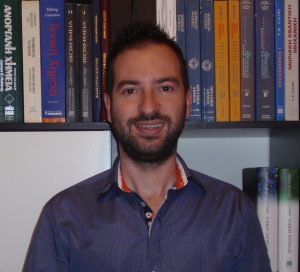

FluoPrints aims to the development of fluorescent inks, pastes and filaments based on carbon dots for cutting edge and bio- applications via 2D and 3D printing technologies. Carbon dots are on the research spotlight of recently, due to their biocompatibility and photoluminescence in advance, while 3D printing is considered a major technological breakthrough that will dominate multiple markets in near future.
FluoPrints targets to the synthesis of high-quality carbon dots with advanced and tuned optoelectronic properties, by sophisticated modification and the subsequent production of novel media with excellent specifications for printed applications. The final innovative products may lead the market of fluorescent printing consumables as of their benign nature, low cost, ease of preparing, complex properties and versatility, since they can be exploited in a plethora of high-tech applications such as: the formulation of custom-made biocompatible fluorescent scaffolds for bio-imaging purposes via 3D printing; for new generation printed electronics as folded sensors and “smart” identifiers; in anti-counterfeiting and information encryption, while their benign nature allows their employment by domestic users.
Dimou Charalampia, Principal Investigator of the research project entitled: «Valorization of agro-industrial by-product streams from Aegean for the production of carotenoids, proteins and novel functional foods»
 The development of bio or environmentally friendly strategies for the production of value-added food products with high nutritional value is a field of high interest for both the industrial sector, consumers and academic research. Driven by increasing social demand for the production of healthier products not colored by chemical synthesized ingredients, malnutrition of a great deal of worldwide population, the necessity of protecting the environment, waste management penalties imposed from inappropriate discharging of waste streams, valorization of high pollutant by-product streams for the production of bio or carotenoids and functional food from costless raw materials, has become inevitable. Therefore, the exploitation of agro-industrial originated by-product streams, aiming at producing functional foods through the application of proper processes, is a promising alternative toward sustainable management, promoting public health.
The development of bio or environmentally friendly strategies for the production of value-added food products with high nutritional value is a field of high interest for both the industrial sector, consumers and academic research. Driven by increasing social demand for the production of healthier products not colored by chemical synthesized ingredients, malnutrition of a great deal of worldwide population, the necessity of protecting the environment, waste management penalties imposed from inappropriate discharging of waste streams, valorization of high pollutant by-product streams for the production of bio or carotenoids and functional food from costless raw materials, has become inevitable. Therefore, the exploitation of agro-industrial originated by-product streams, aiming at producing functional foods through the application of proper processes, is a promising alternative toward sustainable management, promoting public health.
Elefanti Paraskevi, Principal Investigator of the research project entitled: «From hunter-gatherers to early farmers in Greece»

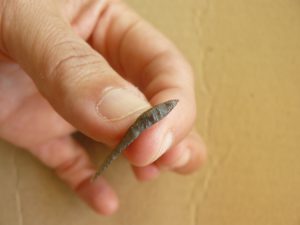 The Mesolithic represents a brief slice of time sandwiched between the Upper Palaeolithic and Neolithic. It begins at the end of the Younger Dryas and is characterised by improving conditions after the extremes of the Last Glacial Maximum. Our understanding of the Mesolithic in Greece was based until recently on a small number of key sites, but there is now a growing body of evidence from the mainland and islands of the Aegean which is beginning to fill these gaps in our knowledge. The picture that these present, is of a preference for coastal environments, although there are also small numbers of sites located in inland and upland areas. A number of models have been put forward to explain the nature of the Mesolithic in Greece, both in terms of its evolution from the Late Upper Palaeolithic as well as the transition to the Neolithic. These all tend to agree that the Greek Mesolithic was atypical compared to the rest of Europe or the Levant.
The Mesolithic represents a brief slice of time sandwiched between the Upper Palaeolithic and Neolithic. It begins at the end of the Younger Dryas and is characterised by improving conditions after the extremes of the Last Glacial Maximum. Our understanding of the Mesolithic in Greece was based until recently on a small number of key sites, but there is now a growing body of evidence from the mainland and islands of the Aegean which is beginning to fill these gaps in our knowledge. The picture that these present, is of a preference for coastal environments, although there are also small numbers of sites located in inland and upland areas. A number of models have been put forward to explain the nature of the Mesolithic in Greece, both in terms of its evolution from the Late Upper Palaeolithic as well as the transition to the Neolithic. These all tend to agree that the Greek Mesolithic was atypical compared to the rest of Europe or the Levant.
Erpapazoglou Zoi, Principal Investigator of the research project entitled: «Role of alternative splicing in the regulation of mitochondrial physiology and retrograde signaling to the nucleus»
Mitochondria are semiautonomous organelles, critically involved in ATP production, Ca2+ buffering, oxidative stress and apoptosis. They are in constant communication with the nucleus, and induce, under stress conditions, massive changes in nuclear gene expression (mitochondrial retrograde signaling). Mitochondrial quality and signaling have attracted great attention in the study of pathogenesis of neurodegenerative and metabolic diseases, as well as cancer. The transcriptional regulation of these pathways has been thoroughly investigated. However, there is growing evidence that post-transcriptional regulation, specifically alternative splicing, constitutes an additional, yet poorly explored level of control.
Evagelopoulos Athanasios, Principal Investigator of the research project entitled: «Assessment of the impacts of biological invasions on the Aegean Sea trophic webs using an ecosystem modeling approach»

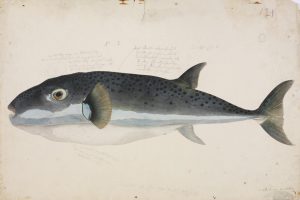 The core objective of MODIAS is the assessment of how biological invasions taking place in the S. Aegean Sea during the last few decades, have impact and are influenced by, native food web structure and functions, fisheries and Climate Change, by using the “Ecopath with Ecosim” ecosystem modeling approach. It will thus adopt a “Cumulative Impacts Assessment” framework, following the “Ecosystem-Based Approach” that is required by major components of EU policy, related to the management of the marine environment and its resources, e.g. the “Marine Strategy Framework Directive” and the “Common Fisheries Policy”.
The core objective of MODIAS is the assessment of how biological invasions taking place in the S. Aegean Sea during the last few decades, have impact and are influenced by, native food web structure and functions, fisheries and Climate Change, by using the “Ecopath with Ecosim” ecosystem modeling approach. It will thus adopt a “Cumulative Impacts Assessment” framework, following the “Ecosystem-Based Approach” that is required by major components of EU policy, related to the management of the marine environment and its resources, e.g. the “Marine Strategy Framework Directive” and the “Common Fisheries Policy”.
MODIAS will advance our state of knowledge regarding the cumulative impact of biological invasions, fisheries and Climate Change in the South Aegean Sea, by development of the first ecosystem models for the study area.
Fameli Kyriaki-Maria, Principal Investigator of the research project entitled: «Observatory of Air and Particulate Pollution over Greece (AirPaP)»

 A great part of worldwide population is daily exposed to air pollution levels that exceed health-based ambient standards. According to the FEI-GREGAA Emission Inventory (E.I.) recently completed by Dr. Fameli for Greece and the Greater Athens Area (GAA), the field of pollutant sources has changed because of major infrastructure projects undertaken and the parallel economic development of new regions. Moreover, the economic crisis has affected human activities and consequently the share of pollution sources in total emissions.
A great part of worldwide population is daily exposed to air pollution levels that exceed health-based ambient standards. According to the FEI-GREGAA Emission Inventory (E.I.) recently completed by Dr. Fameli for Greece and the Greater Athens Area (GAA), the field of pollutant sources has changed because of major infrastructure projects undertaken and the parallel economic development of new regions. Moreover, the economic crisis has affected human activities and consequently the share of pollution sources in total emissions.
AirPaP vision is the development of an integrated air quality system based on state-of-the-art scientific tools that will enable the analysis of the air quality characteristics of Greece and the GAA in particular. The methodology to be applied comprises the E.I. update in order to meet the EU Directive requirements, follow the changes in human socio-economic activities and identify the national and local key source categories.
Fidaros Dimitrios, Principal Investigator of the research project entitled: «Numerical and experimental assessment of solar air heater systems performance towards zero energy buildings»
 The main objective of the project is the development of a user-friendly software tool for the design and energy performance assessment of three types of Solar Air Heater (SAH) systems for heating buildings in Mediterranean climatic conditions. SAH systems represent a cost-effective technology used either to heat a space attached to it or to heat air for industrial applications and processes.
The main objective of the project is the development of a user-friendly software tool for the design and energy performance assessment of three types of Solar Air Heater (SAH) systems for heating buildings in Mediterranean climatic conditions. SAH systems represent a cost-effective technology used either to heat a space attached to it or to heat air for industrial applications and processes.
Initially a simplified software tool based on ISO 13790 will be developed. A test cell of 12 m2 will be constructed with modular south wall where three SAH systems and a modification of the last one will be adapted and measured. Measurements will concern both the indoor microclimatic conditions and the energy performance during winter and summer. Those measurements will be used for the validation of full Computational Fluid Dynamics (CFD) models and of CFD-BES (Building Energy Simulation) models. In parallel the operation of the passive systems will be studied with the state of art BES tools too.
Filiou Michaela, Principal Investigator of the research project entitled: The bioenergetic dimension of stress: focus on mitochondria (ENERGEIA)
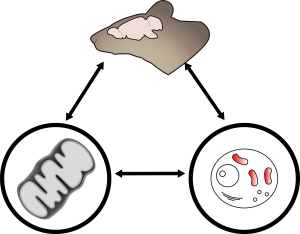

Chronic stress and stress-related pathologies pose a great challenge for modern societies, affecting our life quality, the health system, the pharmaceutical industry and how mental illness is perceived by the public. The molecular mechanisms underlying stress responses remain to date poorly understood. Consequently, currently used treatments for stress-related pathologies target mainly the symptoms rather than the molecular causes, have severe side-effects and show low remission rates.
Fytili Magdalini, Principal Investigator of the research project entitled: «Politics of Recognition: The Afterlife of the Greek Resistance in Law, History, and Memory»

 The official recognition of the European Resistance after the Second World War is of utmost importance, since it is associated with a set of broader public policies that allow us to understand the ways in which states pass from a state of war to a period of peace, restore their social balance and seek the legitimacy of postwar governments. In Greece, National Resistance constituted an open issue for decades. However, compared with the abundant literature for the history of the Resistance, very limited research has been conducted on the issue of the official recognition of the Resistance. Official recognition however, is a key concept for the study of the ‘second life’ of the Resistance and that is why we approach it as an autonomous research field; since it constitutes a long process which functioned as a laboratory for concepts and politics, that decisively affected the formation of Greek society and the political system for at least half a century.
The official recognition of the European Resistance after the Second World War is of utmost importance, since it is associated with a set of broader public policies that allow us to understand the ways in which states pass from a state of war to a period of peace, restore their social balance and seek the legitimacy of postwar governments. In Greece, National Resistance constituted an open issue for decades. However, compared with the abundant literature for the history of the Resistance, very limited research has been conducted on the issue of the official recognition of the Resistance. Official recognition however, is a key concept for the study of the ‘second life’ of the Resistance and that is why we approach it as an autonomous research field; since it constitutes a long process which functioned as a laboratory for concepts and politics, that decisively affected the formation of Greek society and the political system for at least half a century.
Georgiou George, Principal Investigator of the research project entitled: «Non-perturbative Gauge Dynamics from Integrability and Gauge/Gravity Dualities»
One of the longstanding problems in theoretical physics is that of the quantitative description of strongly coupled gauge theories. During the last two decades new ideas and methods have been developed giving us a better understanding of the structure of gauge field theories. One of the most useful tools for exploring gauge theory is the celebrated AdS/CFT correspondence, one of the most fascinating discoveries in modern theoretical physics.
The purpose of the proposed work is to shed some light to the non-perturbative dynamics of gauge field theories. The present project will deploy in two parallel directions. In the first one, we shall focus on the construction and study of integrable multi-parameter deformations of conformal field theories (CFTs) of the WZW type. Emphasis will be given to the key feature of integrability of the resulting theories and not to other aspects, such as supersymmetry. Subsequently, we will embed these models to type IIA or type IIB supergravity, identify the dual gauge theories and study the role of the deformation parameters in their strongly coupled dynamics through the AdS/CFT correspondence.
Georgiou Panos, Principal Investigator of the research project entitled: «Performance εvaluation of Low Energy Asphalt mixes and their impact on Pavement Sustainability (LEAPS)»

 According to the Eurostat and the European Environment Agency transportation accounts for over 23 percent, with increasing trend since 1990, of all human-caused GHG emissions in the European Union. EU has committed for 2020 to cutting its emissions to 20% below 1990 levels. So, a challenge emerges to reduce GHG emissions and improve the sustainability of pavement structures, which provide mobility and access to a range of users as integral part of the roadway and transportation networks.
According to the Eurostat and the European Environment Agency transportation accounts for over 23 percent, with increasing trend since 1990, of all human-caused GHG emissions in the European Union. EU has committed for 2020 to cutting its emissions to 20% below 1990 levels. So, a challenge emerges to reduce GHG emissions and improve the sustainability of pavement structures, which provide mobility and access to a range of users as integral part of the roadway and transportation networks.
Giannakopoulou Artemis, Principal Investigator of the research project entitled: «Integration of experimental investigation and computational modeling to decipher dormancy related stochastic phenomena in Listeria monocytogenes»
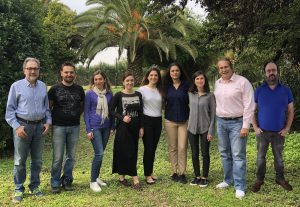
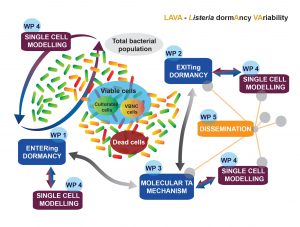 The application of multiple barriers in the food industry aims at the inhibition of growth of spoilage and pathogenic microorganisms, in order to ensure the highest levels of quality and safety of the final products. Listeria monocytogenes is a foodborne bacterial pathogen often found in nature and in food processing environment, and causal agent of the well-known infection, Listeriosis, with a mortality rate of 20-30%. An environmental stimulus, such as a preservative agent in food, may induce changes in a microorganism’s metabolism in aim to increase its survival potential. Several studies have highlighted the importance of the dormancy state as a bacterial response to unfavourable environment. While at this state, cells are called “Viable but non-culturable” (VBNC), they cannot multiply and are non-culturable in the laboratory media, but may regain their culturability when found back in favourable conditions.
The application of multiple barriers in the food industry aims at the inhibition of growth of spoilage and pathogenic microorganisms, in order to ensure the highest levels of quality and safety of the final products. Listeria monocytogenes is a foodborne bacterial pathogen often found in nature and in food processing environment, and causal agent of the well-known infection, Listeriosis, with a mortality rate of 20-30%. An environmental stimulus, such as a preservative agent in food, may induce changes in a microorganism’s metabolism in aim to increase its survival potential. Several studies have highlighted the importance of the dormancy state as a bacterial response to unfavourable environment. While at this state, cells are called “Viable but non-culturable” (VBNC), they cannot multiply and are non-culturable in the laboratory media, but may regain their culturability when found back in favourable conditions.
Giastas Petros, Principal Investigator of the research project entitled: «Structural and Functional Studies of Nicotinic Acetylcholine Receptors»
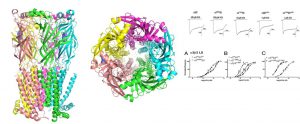 Nicotinic acetylcholine receptors (nAChRs) belong to the family of pentameric ligand gated ion channels (LGIC) and are key molecules in mediating fast neurotransmission and in regulating neurotransmitter release. nAChRs are protein molecules embedded to the cell membrane, which upon acetylcholine binding at their extracellular domain, transmit allosterically the signal across the plasma membrane. It is then when nAChRs undergo complex conformational changes that lead to transient opening of the ion channel, depolarizing the cell membrane and initiating a cascade of events. Apart from nAChRs, the pentameric LGIC family comprises receptors activated by glycine, GABA and serotonine. Due to their involvement in a series of neurodegenerative diseases and disorders, LGICs are the main targets of a series of psychotropic drugs with therapeutic or alleviating properties (including nicotine, varenicline, benzodiazepines, alcohol, antiemetics, general aneasthetics etc).
Nicotinic acetylcholine receptors (nAChRs) belong to the family of pentameric ligand gated ion channels (LGIC) and are key molecules in mediating fast neurotransmission and in regulating neurotransmitter release. nAChRs are protein molecules embedded to the cell membrane, which upon acetylcholine binding at their extracellular domain, transmit allosterically the signal across the plasma membrane. It is then when nAChRs undergo complex conformational changes that lead to transient opening of the ion channel, depolarizing the cell membrane and initiating a cascade of events. Apart from nAChRs, the pentameric LGIC family comprises receptors activated by glycine, GABA and serotonine. Due to their involvement in a series of neurodegenerative diseases and disorders, LGICs are the main targets of a series of psychotropic drugs with therapeutic or alleviating properties (including nicotine, varenicline, benzodiazepines, alcohol, antiemetics, general aneasthetics etc).
Giataganas Dimitrios, Principal Investigator of the research project entitled: «Quark-Gluon Plasma Thermalization and Plasma Instabilities in
AdS/CFT»
 Within theoretical physics, string theory is the most promising candidate for quantum theory of gravity. However, in the recent years it has grown as a rich mathematical structure and tool that has allowed outstanding applications to very different areas of physics and mathematics. One of its most striking achievements is that today we are confident that at least a variety of strongly coupled gauge theories have a dual description in terms of strings. A concrete realization of this connection became available with the famous gauge/gravity correspondence which is one of the most well studied topics in theoretical high energy physics.
Within theoretical physics, string theory is the most promising candidate for quantum theory of gravity. However, in the recent years it has grown as a rich mathematical structure and tool that has allowed outstanding applications to very different areas of physics and mathematics. One of its most striking achievements is that today we are confident that at least a variety of strongly coupled gauge theories have a dual description in terms of strings. A concrete realization of this connection became available with the famous gauge/gravity correspondence which is one of the most well studied topics in theoretical high energy physics.
Our research proposal attempts to answer fundamental questions in strongly coupled quantum physics using this correspondence. A direction of our research consists of the study of the Quark-Gluon Plasma, an extreme state of matter that existed during the very early stages of the creation of our universe and is currently created at the ALICE experiment in the Large Hadron Collider accelerator at CERN. The collision of heavy ions leads to the creation of the quark-gluon plasma, which then expands anisotropically while at the same time tends to return to the usual initial state of matter we experience in our everyday life.
Gkana Eleni, Principal Investigator of the research project entitled: «Rapid field diagnostic technology for detection of major swine viral diseases»
 Diseases affecting livestock can have a devastating impact on animal productivity and production, on live animal trade, meat and other animal products, on human health and, consequently, on the overall process of economic development. Among them, Porcine Reproductive and Respiratory Syndrome virus (PRRSV), Porcine Circovirus (PCV2) and Swine Influenza A (SIV) have a significant impact on the economy of the swine industry. During the last 10 years, much emphasis has been focused on emerging infectious zoonotic diseases, such as Hepatitis E virus (HEV), that have recently drawn more attention. Thus, there is a need for evaluation of reliable, rapid and simple diagnostic testing directly on the field, that would enable rapid local decision making which is crucial to prevent further spreading of the disease. One promising solution that can help address this issue is loop-mediated isothermal amplification (LAMP).
Diseases affecting livestock can have a devastating impact on animal productivity and production, on live animal trade, meat and other animal products, on human health and, consequently, on the overall process of economic development. Among them, Porcine Reproductive and Respiratory Syndrome virus (PRRSV), Porcine Circovirus (PCV2) and Swine Influenza A (SIV) have a significant impact on the economy of the swine industry. During the last 10 years, much emphasis has been focused on emerging infectious zoonotic diseases, such as Hepatitis E virus (HEV), that have recently drawn more attention. Thus, there is a need for evaluation of reliable, rapid and simple diagnostic testing directly on the field, that would enable rapid local decision making which is crucial to prevent further spreading of the disease. One promising solution that can help address this issue is loop-mediated isothermal amplification (LAMP).
Gontikaki Evangelia, Principal Investigator of the research project entitled: «Determination of the self-healing capabilities of the Eastern Mediterranean Sea from accidental deep-sea oil releases»
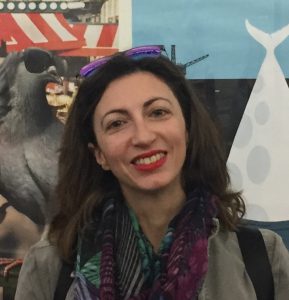 As exploration for new oil and gas fields moves to progressively deeper waters, the risk of oil spills originating in the deep sea is bound to increase in the future. The recent Deepwater Horizon (DWH) oil spill at 1500m in the Gulf of Mexico was a stark reminder of the risks attached to human activity in largely unknown extreme environments and has evidently demonstrated the shortcomings of current response strategies in tackling accidental oil releases in the deep sea.
As exploration for new oil and gas fields moves to progressively deeper waters, the risk of oil spills originating in the deep sea is bound to increase in the future. The recent Deepwater Horizon (DWH) oil spill at 1500m in the Gulf of Mexico was a stark reminder of the risks attached to human activity in largely unknown extreme environments and has evidently demonstrated the shortcomings of current response strategies in tackling accidental oil releases in the deep sea.
In recent years, several major offshore oil and natural gas deposits have been discovered in the Eastern Mediterranean that could be translated into economic growth and energy security for associated countries. However, a similar to DWH incident in the eastern Mediterranean would have disproportionate consequences due to the semi-enclosed nature and the concentrated economic activity along the Mediterranean coast. Today we know that deep-water microbial communities play a pivotal role in oil spill remediation. Understanding the structure and function of microbial communities under the high pressure and low temperature conditions of the deep ocean, is the first step in developing innovative oil spill monitoring and bioremediation solutions.
Gondikas Andreas, Principal Investigator of the research project entitled: «Detection of engineered, incidental, and natural nanoparticles in marine waters, in the proximity of islands»

 The development of nanotechnology has introduced significant advancements in materials sciences and several companies, taking advantage of the unique properties of nanomaterials, are developing nano‐ enabled products that have already entered the market. Cosmetics, sunscreens, paints, automotive parts, tools, fabrics/clothes, toys, and many others are just a few examples. Due to the increasing development and use of nano‐enabled products, release of nanoparticles in the environment is considered unavoidable.
The development of nanotechnology has introduced significant advancements in materials sciences and several companies, taking advantage of the unique properties of nanomaterials, are developing nano‐ enabled products that have already entered the market. Cosmetics, sunscreens, paints, automotive parts, tools, fabrics/clothes, toys, and many others are just a few examples. Due to the increasing development and use of nano‐enabled products, release of nanoparticles in the environment is considered unavoidable.
Quantifying this release is a challenging task, due to the lack of standardized methods of analysis for environmental samples, and the mixing of manufactured with natural nanoparticles in the environment. Natural particles are produced through bio‐geo‐chemical reactions in the environment, such as volcanic activity, the corrosion of rocks by wind and rain, etc.
Hizanidis Johanne, Principal Investigator of the research project entitled: «SQUID metamaterials: chimera states and spatio-temporal dynamics (acronym: SQUIRREL)»
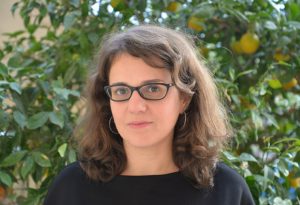
 The interplay between nonlinearity and structure is at the center of research on complex systems. In ensembles of coupled oscillators, the synergy between topological features and the underlying dynamics may lead to interesting self-organized phenomena. Within the SQUIRREL project, we will study a system that is capable of exhibiting such complex dynamics: a SQUID (superconducting quantum-interference device) metamaterial, i. e. an artificially structured medium of periodically arranged, weakly coupled SQUIDs, that exhibits extraordinary properties, e. g. negative diamagnetic permeability. The SQUIRREL project will involve theoretical modeling in close interaction with experimental activity. The main focus will be on chimera states, a fascinating counter-intuitive symmetry breaking phenomenon of partially coherent and partially incoherent behavior. The increasing number of studies on chimeras is impressive, ranging from physical and chemical, to biological and technological systems. Works on superconducting systems, however, are still largely missing.
The interplay between nonlinearity and structure is at the center of research on complex systems. In ensembles of coupled oscillators, the synergy between topological features and the underlying dynamics may lead to interesting self-organized phenomena. Within the SQUIRREL project, we will study a system that is capable of exhibiting such complex dynamics: a SQUID (superconducting quantum-interference device) metamaterial, i. e. an artificially structured medium of periodically arranged, weakly coupled SQUIDs, that exhibits extraordinary properties, e. g. negative diamagnetic permeability. The SQUIRREL project will involve theoretical modeling in close interaction with experimental activity. The main focus will be on chimera states, a fascinating counter-intuitive symmetry breaking phenomenon of partially coherent and partially incoherent behavior. The increasing number of studies on chimeras is impressive, ranging from physical and chemical, to biological and technological systems. Works on superconducting systems, however, are still largely missing.
Ioannidis Stavros, Principal Investigator of the research project entitled: «Biological Metaphysics: Understanding Developmental Mechanisms»

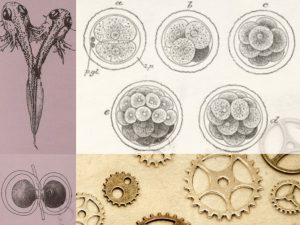
The study of development poses fundamental epistemological and metaphysical problems and has been a traditional focus of philosophical analysis. But although contemporary philosophy of biology has evolved into a central sub-discipline within philosophy of science, developmental biology has received very little philosophical attention. In particular, the ontological and epistemological commitments of contemporary developmental biology constitute issues that are virtually unexplored in the philosophical literature. By combining concepts and methods from philosophy of biology and metaphysics of science with detailed case studies of developmental explanations, this project investigates the explanatory practices of contemporary developmental biology and their consequences for our philosophical views, about the nature of explanation in the life sciences and the ontology of biological systems.
Kalfa Konstantina, Principal Investigator of the research project entitled: «Antiparochi and (its) architects: Histories of social forces, spatial politics and the architectural profession in Greece, 1929-74»
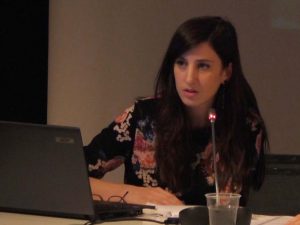 ‘Antiparochi and (its) architects’ is planned as a three-year collaborative research project at the School of Architecture, National Technical University of Athens. The project involves original archival research and interviews with protagonists from different professional backgrounds and generations. It exploits new technologies for the documentation and digitization of archival material and for the development of an open, interactive, multimodal and searchable database. It establishes collaborations with noted scholars from various disciplines and countries to promote a multi-disciplinary and internationally comparative theoretical and methodological analysis, leading to the sharpening of existing and development of new analytical tools. It schedules lectures, public conversations, a specialized workshop in collaboration with UCy, and an international one-day conference as part of the dissemination process.
‘Antiparochi and (its) architects’ is planned as a three-year collaborative research project at the School of Architecture, National Technical University of Athens. The project involves original archival research and interviews with protagonists from different professional backgrounds and generations. It exploits new technologies for the documentation and digitization of archival material and for the development of an open, interactive, multimodal and searchable database. It establishes collaborations with noted scholars from various disciplines and countries to promote a multi-disciplinary and internationally comparative theoretical and methodological analysis, leading to the sharpening of existing and development of new analytical tools. It schedules lectures, public conversations, a specialized workshop in collaboration with UCy, and an international one-day conference as part of the dissemination process.
Kalogiannis Konstantinos, Principal Investigator of the research project entitled: «Novel Conversion Technologies of Waste Biomass to Food additives and Fine Chemicals»

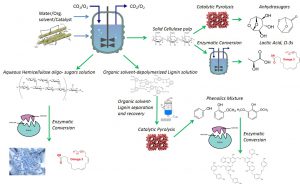 The NoWasteBioTech aims at developing a zero-waste biorefinery concept by using novel pretreatment/fractionation technologies and combining them with thermochemical and enzymatic/fermentation technologies. Agricultural residues such as corn stover and cotton stalks will be fractionated to their three basic constituents, producing three distinct streams: (1) A solid cellulose pulp, (2) An aqueous stream of hemicellulose oligo- and mono- sugars, (3) A depolymerized lignin. Enzymatic and biotransformation processes will be employed to produce high added value chemicals and food additives such as Prebiotics, Lactic acid and Polyunsaturated fatty acids (PUFAs).
The NoWasteBioTech aims at developing a zero-waste biorefinery concept by using novel pretreatment/fractionation technologies and combining them with thermochemical and enzymatic/fermentation technologies. Agricultural residues such as corn stover and cotton stalks will be fractionated to their three basic constituents, producing three distinct streams: (1) A solid cellulose pulp, (2) An aqueous stream of hemicellulose oligo- and mono- sugars, (3) A depolymerized lignin. Enzymatic and biotransformation processes will be employed to produce high added value chemicals and food additives such as Prebiotics, Lactic acid and Polyunsaturated fatty acids (PUFAs).
The main objectives are: a) developing the biorefinery concept, b) converting and increasing the value of Greek waste biomass streams such as agricultural residues, c) providing a holistic approach to convert all three biomass polymers with zero wastes generation, d) developing a flexible robust platform that is feedstock independent through the use of agnostic methods, e) production of targeted high added value food additives and fine chemicals.
Karaba Elpida, Principal Investigator of the research project entitled: «Media Lab for Feminist Public Practices»
The Center of New Media and Feminist Public Practices is dedicated to the production, postproduction, distribution and support of women’s practice and feminist theory development. The center will be an innovative initiative which by definition involves application of information and technology, imagination and diverse methods in deriving new and different values and ethos in new media, feminist practice and public space. Ideas and processes will be conveyed to cultural products which will enhance women’s’ advancement, productivity and assimilation to the professional field.
Karaliopoulos Merkouris, Principal Investigator of the research project entitled: «Crowdsourced networks, services, transport: analytical foundations of sustainable sharing»
The project focuses on applications and services that lie in the broader area of sharing economy. The future of sharing economy and its ultimate role in the world economic activities will depend on many factors, including the legal and regulation policies applied to them. In any case, however, the related service platforms need to cope with fundamental issues regarding the allocation and sharing of common resources, the provision of incentives, and their business models. CRESCENDO responds to this need by drawing analysis tools from the areas of network economics, queuing theory and (stochastic) optimization, but also from machine learning and numerical analysis. It is structured along three discrete thematic areas: shared network connectivity, participatory sensing, and crowdsourced transport. Common to all three thematic areas is the dimension of crowdsourcing and resource sharing, as well as the sustainability challenges that relate to them.
Karapetsas George, Principal Investigator of the research project entitled: «Dynamics of SPREADing on liquid substrates with complex rheology»
The aim of our work is to provide fundamental understanding on the dynamics of liquids spreading on soft materials with complex rheological behavior, a problem that lies at the heart of many engineering, biological and biomedical settings. Emphasis is placed on the drug delivery on compliant substrates, which involves spreading of bioadhesive or muco-adhesive liquids over tissue or over mucus laden films in the lung or elsewhere in the body. In lung diseases such as cystic fibrosis and chronic obstructive pulmonary disease the efficacy of the administered drugs is often limited by heterogeneous distribution and non-uniform deposition. To improve dose uniformity, it is crucial to find ways in order to maximize post-deposition spreading of the liquid drug on the airway lining (e.g. with efficient use of surfactants). The latter, however, consists of a mucus layer with rather complex rheology, typically exhibiting both considerable yield stress and viscoelastic properties.
Katsoprinakis Georgios, Principal Investigator of the research project entitled: «Chirality Amplification and Detection using Cavity Optical Rotation Enhancement (HANDCORE)»

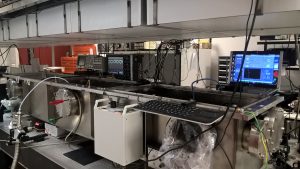 A molecule or ion is “chiral” when it is -geometrically- non-superimposable on its mirror image. This asymmetry manifests as optical activity, i.e. as optical rotation (OR) of the polarization plane of light traversing the sample, with the two “enantiomers” (mirror images) producing opposite polarization rotations. Systems causing OR with the same symmetry as chiral rotation, although not due to their geometry, are also referred to as chiral systems, the prime example being the parity-non-conserving (PNC) optical transitions in certain atomic and molecular systems.
A molecule or ion is “chiral” when it is -geometrically- non-superimposable on its mirror image. This asymmetry manifests as optical activity, i.e. as optical rotation (OR) of the polarization plane of light traversing the sample, with the two “enantiomers” (mirror images) producing opposite polarization rotations. Systems causing OR with the same symmetry as chiral rotation, although not due to their geometry, are also referred to as chiral systems, the prime example being the parity-non-conserving (PNC) optical transitions in certain atomic and molecular systems.
Life is inherently chiral: from the terpenes produced by coniferous trees, to the DNA molecules, and the enzymes, sugars, proteins and amino-acids that drive life. Beyond that, chirality marks important phenomena in atomic physics and inorganic chemistry. Thus, chiral sensing is vital to such diverse fields, ranging from the fundamental research in biology, chemistry, physics and medicine, to the highly-valued pharmaceutical, chemical, cosmetic, and food industries. However, the chiral-induced OR signals are typically very weak, on the order of 10-5 rad for organic gas samples, down to 10-9 rad (or less) when probing parity non-conserving (PNC) atomic or molecular transitions. This is the main impeding factor for practical applications of chiral sensing, despite its apparent importance.
Kleftoyanni Vassiliki, Principal Investigator of the research project entitled: «Perspective of Agroforestry in Thessaly region: a research on social, environmental and economic aspects to enhance farmer participation (acronym: AgroThes)»

 Agroforestry, a novel and well-promising practice in reshaping the countryside of Greece, comes along with parallel benefits in environmental, social and economic terms. Agroforestry is defined as the composite agronomic practice of triple temporal or/and spatial combination of two or three distinct land uses and farming activities, i.e. crop cultivation, or/and forest tree growing, or/and domestic animal breeding. It is an effective form of land use that achieves increased output and ecological stability contributing to environmental sustainability and biodiversity conservation, but also creating social capital and economic opportunities.
Agroforestry, a novel and well-promising practice in reshaping the countryside of Greece, comes along with parallel benefits in environmental, social and economic terms. Agroforestry is defined as the composite agronomic practice of triple temporal or/and spatial combination of two or three distinct land uses and farming activities, i.e. crop cultivation, or/and forest tree growing, or/and domestic animal breeding. It is an effective form of land use that achieves increased output and ecological stability contributing to environmental sustainability and biodiversity conservation, but also creating social capital and economic opportunities.
Taking into account the fact that the EU, recognizing the added value of Agroforestry, promotes and financially enhances it through the CAP, installation of Agroforestry Systems may contribute in addressing the current economic crisis regarding the agricultural section. Agroforestry adoption by local stakeholders depends on social, environmental and economic factors. AgroThes project examines the perspective of Agroforestry in Thessaly region, aiming at enhancing farmer participation, by using the novelty of High Nature Value farming.
Kokkinopoulos Ioannis, Principal Investigator of the research project entitled: «Investigation of the plasticity of cardiac progenitors»
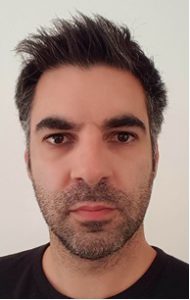
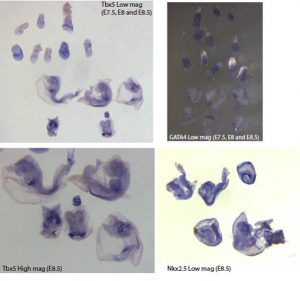 During development, the cardiomyocyte lineage is highly specialised, comprising of cardiac progenitor cells allocated in a discrete and temporal order. At embryonic day 7.5 in mice, the heart tube is the prime structure that will eventually give rise to the heart proper. It is populated by two distinct sets of cardiac progenitors cell subsets, derived from two anatomical regions; the first heart field (also known as the cardiac crescent) which will give rise to the left ventricle and parts of the atria, and the second heart field that contributes towards the right ventricle, outflow tract and the remaining parts of the atria, including the septum. These fields are genetically distinguishable, at embryonic day 7.5, by expression of specific transcription factors.
During development, the cardiomyocyte lineage is highly specialised, comprising of cardiac progenitor cells allocated in a discrete and temporal order. At embryonic day 7.5 in mice, the heart tube is the prime structure that will eventually give rise to the heart proper. It is populated by two distinct sets of cardiac progenitors cell subsets, derived from two anatomical regions; the first heart field (also known as the cardiac crescent) which will give rise to the left ventricle and parts of the atria, and the second heart field that contributes towards the right ventricle, outflow tract and the remaining parts of the atria, including the septum. These fields are genetically distinguishable, at embryonic day 7.5, by expression of specific transcription factors.
Congenital heart defects are often linked to transcriptional networks that orchestrate heart development. Tbx5, the T-box transcription factor is haploinsufficient in Holt-Oram syndrome, and is one of the cardinal TFs essential for cardiac development. Its expression is also of paramount importance for obtaining CMs from embryonic stem cells, human induced pluripotent stem cells, or via direct reprogramming of any cell type.
Koletsi Maria, Principal Investigator of the research project entitled: «Growing & Enabling Information Technologies for Online Neighborhoods: Implications & Applications»
G.E.I.T.O.N.I.A. project (the word “geitonia” stands for neighborhood in Greek) aspires to advance the current research field on the concepts of neighborhood and community, both on theoretical and empirical level. It will do so by providing, at a pilot level, a free, non-commercial local online application for neighborhoods in Greece, designed according to the findings of a multidisciplinary research study and the members of the local community as co-creators, on the one hand. And on the other, by studying and analyzing the effect of such an application on the strengthening of social bonds across a local physical community that can lead to the formation of a “hybrid” neighborhood (convergence of physical and virtual) from a socio-psychological point of view.
Kostopoulou Athanasia, Principal Investigator of the research project entitled: «Low-Temperature Growth of Perovskite Nanosystems for High-Performance Perovskite Solar Cells»

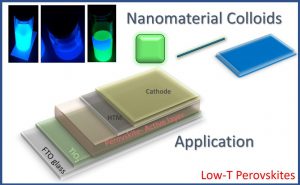 Photovoltaic is the most promising technology of converting solar energy to useful electrical power. The need for materials of lower production cost than those commercially available has led to new photovoltaic technologies. In less than five years, the perovskite solar cells have been considered a promising photovoltaic technology due to the unprecedented rise of their power conversion (from 3.8 to 20 %) similar to that observed for the rest of photovoltaic devices after decades of research effort. The light-harvesting active material for these solar cells is a perovskite, namely a semiconductor of the AMX3 type, where A is a cation (organic or inorganic), M a heavy atom (cation) such as Pb or Sn and X a halide atom (Cl, Br, I).
Photovoltaic is the most promising technology of converting solar energy to useful electrical power. The need for materials of lower production cost than those commercially available has led to new photovoltaic technologies. In less than five years, the perovskite solar cells have been considered a promising photovoltaic technology due to the unprecedented rise of their power conversion (from 3.8 to 20 %) similar to that observed for the rest of photovoltaic devices after decades of research effort. The light-harvesting active material for these solar cells is a perovskite, namely a semiconductor of the AMX3 type, where A is a cation (organic or inorganic), M a heavy atom (cation) such as Pb or Sn and X a halide atom (Cl, Br, I).
Kougias G. Panagiotis, Principal Investigator of the research project entitled: «Unravelling Ariadne’s thread into the microbiome of Anaerobic Digestion labyrinth»

 The objective of “MicroAD: Unravelling Ariadne’s thread into the microbiome of Anaerobic Digestion labyrinth” is to elucidate the functional organisation of engineered anaerobic microcosms, such as the one populating biogas reactors, by a novel platform based on utilisation of modern molecular and analytical tools and models. Anaerobic digestion is a biological process, mediated by different groups of microorganisms, which follow diverse metabolic pathways to produce biogas. Biogas is a mixture of gases (mainly composed by methane and carbon dioxide) and is used for the production of electricity, heat, or after processing, transport fuel. Organic matter used as a substrate for biogas production is usually agro-industrial or urban waste, manure and food residues. The composition, the relative abundance and the interactions within this microbial community, in combination with substrate characteristics, are pivotal to the performance of the bioreactor. Furthermore, the microbial communities change in response to different environmental conditions, so that the biogas reactor can be considered as a dynamic system requiring a constant and reliable monitoring and control.
The objective of “MicroAD: Unravelling Ariadne’s thread into the microbiome of Anaerobic Digestion labyrinth” is to elucidate the functional organisation of engineered anaerobic microcosms, such as the one populating biogas reactors, by a novel platform based on utilisation of modern molecular and analytical tools and models. Anaerobic digestion is a biological process, mediated by different groups of microorganisms, which follow diverse metabolic pathways to produce biogas. Biogas is a mixture of gases (mainly composed by methane and carbon dioxide) and is used for the production of electricity, heat, or after processing, transport fuel. Organic matter used as a substrate for biogas production is usually agro-industrial or urban waste, manure and food residues. The composition, the relative abundance and the interactions within this microbial community, in combination with substrate characteristics, are pivotal to the performance of the bioreactor. Furthermore, the microbial communities change in response to different environmental conditions, so that the biogas reactor can be considered as a dynamic system requiring a constant and reliable monitoring and control.
Kougioumoutzis Konstantinos, Principal Investigator of the research project entitled: «Species on the brink of extinction»

The planet is facing an unprecedented biodiversity crisis, with current extinction rates 1000 times higher than the background extinction rate. In order to halt this phenomenon, the Convention on Biological Diversity targets to prevent the extinction of known threatened species and to improve their conservation status by 2020. Nevertheless, extinction rates under current management schemes will continue to increase under any potential future climate scenario. Greece constitutes one of the most important biodiversity hotspots worldwide and hosts 74 Critically Endangered (CR) taxa at national and global level. Fifty of the CR taxa were assessed prior to 2012 and were classified as such, based solely on geographical criteria and without any data regarding their population trend; the latter being one of the most fundamental criteria regarding the threat categorization according to IUCN.
The persistent and escalating threats to biodiversity, coupled with underfunding, make it inevitable that conservation managers apply a triage procedure in decision making, that focuses on prioritizing species based on biodiversity benefits, recovery potential and costs to achieve a desired goal.
Koukaras N Emmanuel, Principal Investigator of the research project entitled: «Designing pillared graphene nanomaterials with tuneable electronic properties and enhanced flexibility for electronic devices (GRAFEL)»

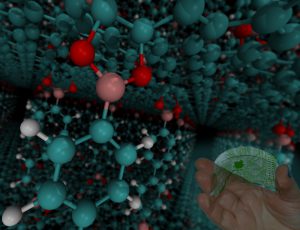 The vision for implementing this project has been primarily driven by the requirement of cheaper, large-area electronic devices that can be integrated on flexible substrates through low-temperature deposition or solution-based printing methods. The great challenge in the area is to surpass the respective disadvantages of inorganic and organic semiconducting materials for use in flexible electronics and design new materials that combine their advantages, namely controllable electronic properties accompanied by mechanical conformability. From a device design perspective, such materials will also lead to minimization of contact issues (heat dissipation, contact resistance) associated with the interface which exists when multiple materials are combined.
The vision for implementing this project has been primarily driven by the requirement of cheaper, large-area electronic devices that can be integrated on flexible substrates through low-temperature deposition or solution-based printing methods. The great challenge in the area is to surpass the respective disadvantages of inorganic and organic semiconducting materials for use in flexible electronics and design new materials that combine their advantages, namely controllable electronic properties accompanied by mechanical conformability. From a device design perspective, such materials will also lead to minimization of contact issues (heat dissipation, contact resistance) associated with the interface which exists when multiple materials are combined.
Dr. Emmanuel N. Koukaras, from the Institute of Chemical Engineering Sciences in Patras, will address this challenge through this highly ambitious research project that offers no less than to open a new field of research on graphene-based flexible electronics and promote it to a level of maturity that accompanies establishing procedures for (a) the adjustment of material properties by design, (b) the chemical synthesis of components, and (c) rudimental device fabrication as proof of concept.
Kyrargyri Vasiliki, Principal Investigator of the research project entitled: «Microglia-driven pathology and altered brain surveillance in demyelination»
 Neuroflammation is a common feature of all neurodegenerative disorders, ranging from immune-mediated diseases such as multiple sclerosis (MS), to classical neurodegenerative diseases such as Alzheimer’s disease, and is a promising target for therapeutic intervention. Microglia is the local immune system of the central nervous system (CNS) that mediates intrinsic neuroinflammation. Chronic activation promotes neuroinflammation and induces secondary damage to brain tissue. Recent research, however, has shown that microglia performs equally important regulatory functions in the healthy brain, and has a beneficial role in restoring local tissue alterations. This multiplicity of microglial function suggests that these cells react differently to similar stimuli, acquiring either a beneficial or a harmful role. The new data implies the need for a better understanding of microglial function before designing any therapeutic approach that will target them. In this study, we will investigate the hypothesis that activation of specific microglial molecules contributes to the progression of chronic neuroinflammation, while reducing its positive contribution to brain repair.
Neuroflammation is a common feature of all neurodegenerative disorders, ranging from immune-mediated diseases such as multiple sclerosis (MS), to classical neurodegenerative diseases such as Alzheimer’s disease, and is a promising target for therapeutic intervention. Microglia is the local immune system of the central nervous system (CNS) that mediates intrinsic neuroinflammation. Chronic activation promotes neuroinflammation and induces secondary damage to brain tissue. Recent research, however, has shown that microglia performs equally important regulatory functions in the healthy brain, and has a beneficial role in restoring local tissue alterations. This multiplicity of microglial function suggests that these cells react differently to similar stimuli, acquiring either a beneficial or a harmful role. The new data implies the need for a better understanding of microglial function before designing any therapeutic approach that will target them. In this study, we will investigate the hypothesis that activation of specific microglial molecules contributes to the progression of chronic neuroinflammation, while reducing its positive contribution to brain repair.
Lagkouvardos Ilias, Principal Investigator of the research project entitled: «Large-scale bioinformatic integration of sequence data for novel insights into microbial diversity and ecology»

 Studying microbial diversity and ecology allows the discovery of novel microbial functions and the design of innovative strategies, towards targeted manipulation of microbial communities for the sake of biotechnological, environmental, or health-related issues. However, this process is slowed down by the currently limited description of microbial diversity and poor understanding of community dynamics, amplified by the lack of data integration and utilization tools. I propose to tackle this issue by means of innovative bioinformatic approaches. Thanks to our past efforts in integration of microbial data into the web-based platform IMNGS (www.imngs.org), we are now able to utilize the universal pool of sequence-based knowledge to address several important microbial ecological questions. I plan to utilize this resource to provide answers to ‘what’ is the sequence supported global prokaryotic diversity and ‘where’ future microbial isolation efforts should focus for environments rich in undescribed taxa. Furthermore, by clustering thousands of microbial composition profiles available in IMNGS, we will provide evidence for the existence of persistent composition states (attractors) in different environments, identify their core species based on co-occurrence networks, and explore their functional basis.
Studying microbial diversity and ecology allows the discovery of novel microbial functions and the design of innovative strategies, towards targeted manipulation of microbial communities for the sake of biotechnological, environmental, or health-related issues. However, this process is slowed down by the currently limited description of microbial diversity and poor understanding of community dynamics, amplified by the lack of data integration and utilization tools. I propose to tackle this issue by means of innovative bioinformatic approaches. Thanks to our past efforts in integration of microbial data into the web-based platform IMNGS (www.imngs.org), we are now able to utilize the universal pool of sequence-based knowledge to address several important microbial ecological questions. I plan to utilize this resource to provide answers to ‘what’ is the sequence supported global prokaryotic diversity and ‘where’ future microbial isolation efforts should focus for environments rich in undescribed taxa. Furthermore, by clustering thousands of microbial composition profiles available in IMNGS, we will provide evidence for the existence of persistent composition states (attractors) in different environments, identify their core species based on co-occurrence networks, and explore their functional basis.
Lallas Dimitris, Principal Investigator of the research project entitled: «Consumerism in a period of economic crisis: Consumption practices and forms of governance»

This research proposal regards the study of the cultural significance of consumption in a period of economic recession and debt crisis. This research aims to investigate whether, and at which point is consumerism as a cultural tendency, undergoing a crisis or if it is reproduced in economic crisis conditions.
The central research question is whether and at which point the cultural tendency of consumerism is undergoing a crisis or if it is reproduced in a period of economic recession and debt. This question is specialized in two research targets: First, the concepts, view-points, mentalities, values and value judgements, as well as the social practices and relations of the social subjects in the current social context should be studied using qualitative methods. Second, we shall investigate whether, in a context of crisis and debt economy, the neoliberal governance logic problematizes individuals as consumers.
Leriou Eirini, Principal Investigator of the research project entitled: «Understanding, measuring and monitoring children’s welfare: An action plan with “The Smile” C.W. – SMILE)»


In this research project, an initial indicator of child welfare (well-being) or its opposite child poverty will be used, which has already been declared by the project scientific coordinator. This indicator will be developed, finalized and compared with other relevant indicators that record child welfare (well-being) and will be implemented in schools of Attica region. The participant/user is the “The Smile of the Child”, which has confirmed in writing its intention to cooperate, and will help focus on necessary information for the study of child welfare. An analysis of the results will be held, which will formulate specific proposals for economic and social policy, mitigation of child poverty and welfare enhancement of children in Greece.
Markou Athina, Principal Investigator of the research project entitled: «Liquid biopsy for the early detection of clinical relapse in patients with operable early stage non-small cell lung cancer and evaluation of genetic heterogeneity»
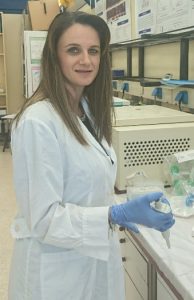
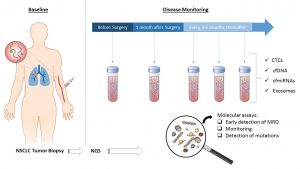 Lung cancer is the most common cause of cancer-related mortality worldwide. However, even after complete primary tumor resection, about 45% of early stage NSCLC patients develop local or distant recurrence within 8-18 months. These distant metastases arise from single migratory tumor cells that, detached from the primary tumor, survive in the circulation and, finally, colonize distant target tissue. The possibility of probing the molecular landscape of solid tumors via a blood draw -termed as ‘liquid biopsy’- with major implications for research and patient care, has attracted remarkable interest among the oncology community. In this proposal, by testing a combined analysis of CTCs, exosomes, cfDNA and cfmiRNAs we aim to: i) monitor MRD during the follow-up of patients with resected NSCLC, and ii) detect disease relapse in advance of established metastatic disease. More specifically, by analysing peripheral blood samples from NSCLC patients that undergo tumor biopsy, we aim to stratify patients in high risk and low risk to develop metastasis.
Lung cancer is the most common cause of cancer-related mortality worldwide. However, even after complete primary tumor resection, about 45% of early stage NSCLC patients develop local or distant recurrence within 8-18 months. These distant metastases arise from single migratory tumor cells that, detached from the primary tumor, survive in the circulation and, finally, colonize distant target tissue. The possibility of probing the molecular landscape of solid tumors via a blood draw -termed as ‘liquid biopsy’- with major implications for research and patient care, has attracted remarkable interest among the oncology community. In this proposal, by testing a combined analysis of CTCs, exosomes, cfDNA and cfmiRNAs we aim to: i) monitor MRD during the follow-up of patients with resected NSCLC, and ii) detect disease relapse in advance of established metastatic disease. More specifically, by analysing peripheral blood samples from NSCLC patients that undergo tumor biopsy, we aim to stratify patients in high risk and low risk to develop metastasis.
Mazarakos P. Thomas, Principal Investigator of the research project entitled: «Floating Hybrid Mooring Wind Turbine Energy System
(Acronym: FHMES) »

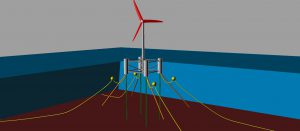 FHMES (Floating Hybrid Mooring Wind Turbine Energy System) is a contemporary project, aiming at the development and design of a moored steel platform, suitable for offshore wind energy resource exploitation. It involves an interdisciplinary collaboration, which covers all aspects of FHMES platform analysis and design, validated through scaled-down hydrodynamic testing.
FHMES (Floating Hybrid Mooring Wind Turbine Energy System) is a contemporary project, aiming at the development and design of a moored steel platform, suitable for offshore wind energy resource exploitation. It involves an interdisciplinary collaboration, which covers all aspects of FHMES platform analysis and design, validated through scaled-down hydrodynamic testing.
The purpose of the FHMES project is the design of an offshore floating platform suitable for supporting a wind turbine (WT) in the Mediterranean Sea area, for given extreme and operational environmental conditions at selected locations. The examined platform will be equipped with a 10 MW WT. FHMES proposal also investigates possible mooring systems arrangements of the floating offshore WT.
Mellidou Ifigeneia, Principal Investigator of the research project entitled: «Plant Growth Promoting Rhizobacteria (PGPR) that alleviate abiotic stress in plants grown in the Mediterranean environment: understanding the biochemical and molecular mechanisms of tolerance»
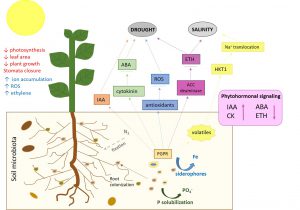
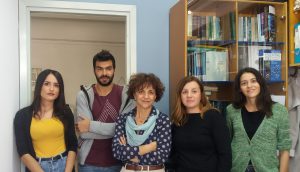 Environmental stresses such as drought, or salinity can severely injure plants, triggering a wide range of responses detectable at the physiological, biochemical, and molecular level. The synergistic effect of the striking losses of crop production and the constantly growing world population is expected to worsen in the future, thus representing a major challenge for current agricultural practices to find solution to the steadily escalating demand for food production. The use of Plant-Growth-Promoting Rhizobacteria (PGPR) can serve as a promising sustainable strategy to improve crop production under sub-optimal conditions. These bacteria are a group of microbes which colonize plant roots and improve plant growth, while some of them may also improve plant tolerance to (a)biotic stress factors.
Environmental stresses such as drought, or salinity can severely injure plants, triggering a wide range of responses detectable at the physiological, biochemical, and molecular level. The synergistic effect of the striking losses of crop production and the constantly growing world population is expected to worsen in the future, thus representing a major challenge for current agricultural practices to find solution to the steadily escalating demand for food production. The use of Plant-Growth-Promoting Rhizobacteria (PGPR) can serve as a promising sustainable strategy to improve crop production under sub-optimal conditions. These bacteria are a group of microbes which colonize plant roots and improve plant growth, while some of them may also improve plant tolerance to (a)biotic stress factors.
Melissaropoulou Dimitra, Principal Investigator of the research project entitled: «Digitizing the Cappadocian Dialectal Landscape»

 The project aims at the thorough documentation and study of an Asia Minor Greek linguistic variety, in specific the Cappadocian dialect, attempting, for the first time in Greece, to implement a fully digital approach to dialectological research, by applying cutting-edge informatics tools to the study and documentation of dialectal variation. In detail, apart from primary linguistic research leading to the production of scholarly papers advancing our knowledge in the field of Linguistics and Cultural History, the project aims to produce two state-of-the-art major reference works, namely an interactive electronic dialectal atlas (which will constitute the first such effort in the domain of Greek Linguistics) and a comprehensive historical dictionary of the Cappadocian dialects (again lacking until now).
The project aims at the thorough documentation and study of an Asia Minor Greek linguistic variety, in specific the Cappadocian dialect, attempting, for the first time in Greece, to implement a fully digital approach to dialectological research, by applying cutting-edge informatics tools to the study and documentation of dialectal variation. In detail, apart from primary linguistic research leading to the production of scholarly papers advancing our knowledge in the field of Linguistics and Cultural History, the project aims to produce two state-of-the-art major reference works, namely an interactive electronic dialectal atlas (which will constitute the first such effort in the domain of Greek Linguistics) and a comprehensive historical dictionary of the Cappadocian dialects (again lacking until now).
Mesaritakis Charis, Principal Investigator of the research project entitled: «NEBULA – Neuromorphic Processors based on Quantum-Dot Lasers»

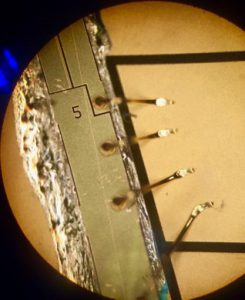 NEBULA project targets the investigation of cutting edge technologies in the emerging field of photonic neuromorphic engineering. This field, engulfs widespread computational paradigms like neural networks and photonic technology; aiming to merge the low power ultra-fast operation of photonics with the flexibility and computational efficiency of neural-like paradigms. In particular, our efforts will be focused on combining recent advantages in quantum-dot based ultra-fast photonic neurons and a subset of recursive neural networks with unparalleled merits called reservoir computing. Quantum dot photonic structures, due to the 3D spatial confinement of carriers allow an atom-in-a-box like behaviour, thus enabling thermal insensitivity, ultra-fast response time and more importantly multi-band emission capabilities. Especially, this last feature, can provide a fully isomorphic to neural circuits behaviour, by encoding inhibitory and excitatory neural signals as ultra-short pulses from different optical wavelengths. In a complementary direction, reservoir computing is an extremely powerful machine learning paradigm that bypasses the slow-convergence of training by employing nonlinear randomly interconnected recursive neural nodes driven to the edge-of-chaos. The dimensionality increase allows for high efficient prediction or classification of complex time-dependent signals.
NEBULA project targets the investigation of cutting edge technologies in the emerging field of photonic neuromorphic engineering. This field, engulfs widespread computational paradigms like neural networks and photonic technology; aiming to merge the low power ultra-fast operation of photonics with the flexibility and computational efficiency of neural-like paradigms. In particular, our efforts will be focused on combining recent advantages in quantum-dot based ultra-fast photonic neurons and a subset of recursive neural networks with unparalleled merits called reservoir computing. Quantum dot photonic structures, due to the 3D spatial confinement of carriers allow an atom-in-a-box like behaviour, thus enabling thermal insensitivity, ultra-fast response time and more importantly multi-band emission capabilities. Especially, this last feature, can provide a fully isomorphic to neural circuits behaviour, by encoding inhibitory and excitatory neural signals as ultra-short pulses from different optical wavelengths. In a complementary direction, reservoir computing is an extremely powerful machine learning paradigm that bypasses the slow-convergence of training by employing nonlinear randomly interconnected recursive neural nodes driven to the edge-of-chaos. The dimensionality increase allows for high efficient prediction or classification of complex time-dependent signals.
Michailof Chrysoula, Principal Investigator of the research project entitled: «Sustainable conversion of agro-industrial REsidues and WAste-streams to high-added value CHEMicals (ReWardChem)»
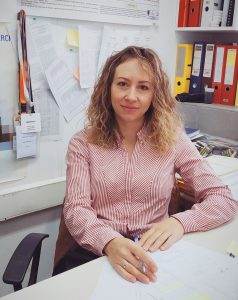
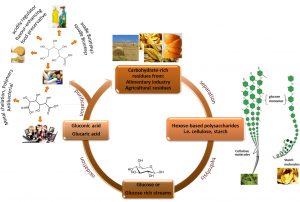 In the framework of circular economy and green chemistry, increasing scientific effort is placed on the exploitation of waste towards the production of bio-fuels and bio-chemicals. Particular emphasis is assigned to the valorization of waste/residual biomass, as one of the most abundant, renewable and sustainable sources of alternative feedstock, simultaneously fulfilling the need to preserve cultivable land for food production. Thus, ReWardCHEM project’s objective is the development of a sustainable, green, chemo-catalytic route for the valorization of agricultural by-products (e.g. tree branches, cotton mill waste) and food processing waste (e.g. vegetable and fruit kernels, pulp and peel) available in the Southern Mediterranean area and in Greece in particular, so as to produce the high added value versatile platform chemicals gluconic and glucaric acid. Gluconic and glucaric acids are the products of glucose oxidation. As chemicals they have multiple applications ranging from the alimentary and pharmaceuticals to chemical and materials (polymers) industry. Indicatively, gluconic acid and its derivatives are used as food additives and food acidity regulators, glucaric acid may be used for the synthesis of bio-based adipic acid, while specific glucaric acid salts and lactones possess anti-carcinogenic properties.
In the framework of circular economy and green chemistry, increasing scientific effort is placed on the exploitation of waste towards the production of bio-fuels and bio-chemicals. Particular emphasis is assigned to the valorization of waste/residual biomass, as one of the most abundant, renewable and sustainable sources of alternative feedstock, simultaneously fulfilling the need to preserve cultivable land for food production. Thus, ReWardCHEM project’s objective is the development of a sustainable, green, chemo-catalytic route for the valorization of agricultural by-products (e.g. tree branches, cotton mill waste) and food processing waste (e.g. vegetable and fruit kernels, pulp and peel) available in the Southern Mediterranean area and in Greece in particular, so as to produce the high added value versatile platform chemicals gluconic and glucaric acid. Gluconic and glucaric acids are the products of glucose oxidation. As chemicals they have multiple applications ranging from the alimentary and pharmaceuticals to chemical and materials (polymers) industry. Indicatively, gluconic acid and its derivatives are used as food additives and food acidity regulators, glucaric acid may be used for the synthesis of bio-based adipic acid, while specific glucaric acid salts and lactones possess anti-carcinogenic properties.
Moulianitis Vasileios, Principal Investigator of the research project entitled: «Design and Development of a Reconfigurable Metamorphic Manipulator System»
The OVIDIUS proposal aims at the development of an integrated reconfigurable metamorphic open kinematic chain manipulator system, for application in the field of therapeutic and post-op massaging. However, the main aim of the proposal is to provide the means that will enable robotics to achieve a higher configurability level, which is one of the main key technological aspects that will enable the evolution of robotics in the future. OVIDIUS project specific goals are: i) hardware design and development for the structuring of reconfigurable metamorphic open kinematic chain manipulators; ii) software tool development for the kinematic and dynamic modeling of metamorphic manipulators; iii) control scheme development for the proposed reconfigurable metamorphic robot system; iv) the development of optimization methods, for proposed system functionality as well as reconfiguration and metamorphosis; and v) the development of a laboratory TRL level 5 demonstrator.
Nazou Despoina, Principal Investigator of the research project entitled: «ARCHAEOTOUR – Archaeology, Tourism and Island Communities: Reception, Conseptualisation and Appropriation of Archaeological Record in Island Greece»

Public archaeology emerges as a scientific imperative when archaeology enters the real sphere of economy, society and political dispute. In this context, local communities receive and remake archaeological meanings and interpret the “pasts” within specific historical and cultural contexts as “cultural heritage”. Various groups, dominant or dominated, within the multi-layered and hierarchical communities participate in or are excluded from “agreements” and “consensuses’ on the political ways in which specific materialities of the past, are selected to signify individual or collective identities. In a similar perspective, both institutionalised ‘memory’ and ‘oblivion’, define and are defined by archaeology. This largely weaves cultural identities and is closely woven into identity politics. Archaeology is then perceived as a reflexive field of the local communities themselves, through tourist use and the nostalgic restoration of experiences, memories and biographies of people and places.
Nikolopoulos D. Christos, Principal Investigator of the research project entitled: «Modeling electromagnetic emissions of space equipment for EMC and cleanliness purposes»

 This technical activity outlines the research prerequisites, as well as the technical approach for the definition and development of credible Modelling Methods for Electro-Magnetic Compatibility and Cleanliness purposes, of space mission critical equipment. The target of these modelling methods is to identify potential electromagnetic cleanliness and compatibility problems of the spacecraft harnesses and equipment in the early design stages, and guide the mission definition and later design phases. As the payload of every scientific mission consists of a large number of different instruments to measure electromagnetic fields and particle populations in space plasma, these instruments are necessarily sensitive to magnetic and electric fields that are produced by the spacecraft’s onboard equipment, units as well as harnesses. This implies stringent electromagnetic cleanliness requirements.
This technical activity outlines the research prerequisites, as well as the technical approach for the definition and development of credible Modelling Methods for Electro-Magnetic Compatibility and Cleanliness purposes, of space mission critical equipment. The target of these modelling methods is to identify potential electromagnetic cleanliness and compatibility problems of the spacecraft harnesses and equipment in the early design stages, and guide the mission definition and later design phases. As the payload of every scientific mission consists of a large number of different instruments to measure electromagnetic fields and particle populations in space plasma, these instruments are necessarily sensitive to magnetic and electric fields that are produced by the spacecraft’s onboard equipment, units as well as harnesses. This implies stringent electromagnetic cleanliness requirements.
Although the heritage knowledge and experience from previous missions is limited, the appropriate methodology to be applied is to select critical platform equipment (Equipment under Test – EUT), to characterize them using specific test procedures and finally, to perform simulations to analyze the electromagnetic behavior of the equipment and define corresponding electromagnetic models.
Orfanos Christos, Principal Investigator of the research project entitled: «An Integrated tool for the Assessment of the Spatial Distribution of Geotechnical Parameters based on high Resolution 3d Geophysical Models»
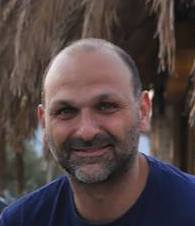
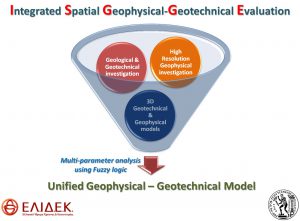 In general, engineers, scientists and researchers, are tasked with finding solutions to complex problems by applying scientific, economic, social and practical knowledge, in order to design, build, and maintain structures, materials and processes. The latter, in combination with the unknown factor of the geological medium and the estimation of a sound geological model, has the triggered interest in performing research in the Geomechanics field, focusing on various types of engineering works. Assessing the stability and integrity of structures often requires a multi-disciplinary approach and constructive collaboration between experts in geotechnical and environmental engineering, in geophysics, hydrology, and geology.
In general, engineers, scientists and researchers, are tasked with finding solutions to complex problems by applying scientific, economic, social and practical knowledge, in order to design, build, and maintain structures, materials and processes. The latter, in combination with the unknown factor of the geological medium and the estimation of a sound geological model, has the triggered interest in performing research in the Geomechanics field, focusing on various types of engineering works. Assessing the stability and integrity of structures often requires a multi-disciplinary approach and constructive collaboration between experts in geotechnical and environmental engineering, in geophysics, hydrology, and geology.
Pafilis Evangelos, Principal Investigator of the research project entitled: «PREGO – Text mining and data integration to elucidate ecosystem functioning: associating organisms and environments with biogeochemical and anthropogenic impact processes»

 Process, Environment, Organism (PREGO), is a systems-biology approach to elucidate ecosystem function at the microbial dimension. Large-scale text-mining, data-mining, and network analysis are combined to this end. To understand key functions of ecosystems, it is fundamental to study ‘what biogeochemical processes’ occur, in ‘which environments’ (where), and ‘which organisms carry them out’ (who). Microbiology, molecular ecology and biodiversity address the above. Phylogenetic marker gene analyses, aim at deciphering the community composition of environmental samples. Sequence analysis pipelines assemble, cluster, and characterize environmental DNA, RNA, and protein sequences to infer community composition and to assign functions. Standards-compliant, expert-assigned, metadata annotations (like isolation source) provide valuable input too. Importantly, pieces of information missing from an experiment’s data record metadata, or stored in fragmented computational analysis results, may be described in the accompanying literature. Thus, although valuable researcher input exists, it may just lie buried in free-text.
Process, Environment, Organism (PREGO), is a systems-biology approach to elucidate ecosystem function at the microbial dimension. Large-scale text-mining, data-mining, and network analysis are combined to this end. To understand key functions of ecosystems, it is fundamental to study ‘what biogeochemical processes’ occur, in ‘which environments’ (where), and ‘which organisms carry them out’ (who). Microbiology, molecular ecology and biodiversity address the above. Phylogenetic marker gene analyses, aim at deciphering the community composition of environmental samples. Sequence analysis pipelines assemble, cluster, and characterize environmental DNA, RNA, and protein sequences to infer community composition and to assign functions. Standards-compliant, expert-assigned, metadata annotations (like isolation source) provide valuable input too. Importantly, pieces of information missing from an experiment’s data record metadata, or stored in fragmented computational analysis results, may be described in the accompanying literature. Thus, although valuable researcher input exists, it may just lie buried in free-text.
Palikaras Konstantinos, Principal Investigator of the research project entitled: «Mitophagy in Neuronal physiology and Neurodegeneration»

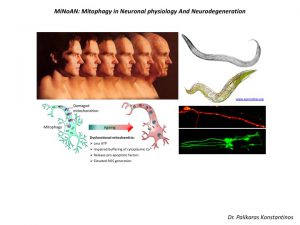
Recent findings implicate mitochondrial abnormalities in the pathogenesis of neurodegenerative diseases, highlighting that mitochondrial DNA mutations, autophagy and oxidative stress are factors contributing to neurodegeneration. Autophagic dysfunction and oxidative stress occur early in all major neurodegenerative diseases, suggesting that these abnormalities have a causal role in disease pathogenesis. Elimination of impaired mitochondria is essential in long-lived and constantly highly metabolic active cells, including neurons, among others. Neuronal cells rely on proper mitochondrial function. Therefore, it is not surprising that several mitochondrial diseases are accompanied by neurological abnormalities. The cytosolic E3 ubiquitin ligase Parkin and the mitochondrial phosphatase and tensin homolog (PTEN)-induced kinase 1 (PINK1), mutations of which are associated with the autosomal recessive form of parkinsonism have been implicated in the mitophagy process. The PINK1/Parkin pathway is the best-studied molecular pathway mediating selective autophagy of impaired and/or aged mitochondria. Although, the primary targets of the disease are neuronal cells, our knowledge on the PINK1/Parkin pathway is mainly based on in vitro studies using established cell lines.
Panagouli Eleni, Principal Investigator of the research project entitled: «Forest maps “in process”. The social construction of environmental regimes»


The construction of forest maps which started in the beginning of 2017, is a project on a national level and is the necessary preliminary stage of establishing the Cadastre. The research subject is the observation of forest map construction procedure, which is going to take place during the next few years. We intend to explore the production process of forest maps using sociological and physical geographical analysis tools. This choice is based on considering forest maps as more than a simple technical means, but as a kind of institution that directs public action. In the first part, the research will take place on a national level. More specifically, on this part we will: i) treat the survey geographical data, make demographic and sociological data comparisons, ii) effectuate a research by questionnaires and by selection of data on forest-station level, iii) hold interviews from specialists and decision makers in related state services, and iv) make participatory observation in working groups or information exchange meetings of above-mentioned agents.
Panou Theodora, Principal Investigator of the researc project entitled: «Cognitive, psychoemotional and neuroimaging predictors of disease progression in the early stages of Multiple Sclerosis»

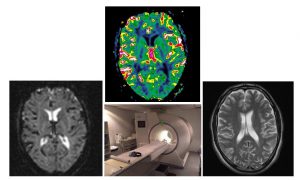
The objective of the proposed longitudinal study is to investigate cognitive, psychoemotional and neuroimaging parameters, recorded during the early stages of Multiple Sclerosis (MS) that affect long-term disease outcomes. The study capitalizes on comprehensive neuroimaging, neurological, and neuropsychiatric data available on a cohort of 80 patients, who had been recently diagnosed with mild MS in the 2013-4 period, and proposes a comprehensive follow-up neurological and neuropsychiatric evaluation of the same patients using identical procedures after a period of 5 years (i.e., during 2018-9).
Pantatosaki Evangelia, Principal Investigator of the research project entitled: «Engineering Gene-based Nanoparticles: A computer-aided study toward Targeted Cancer Therapeutics (ENGETACT)»

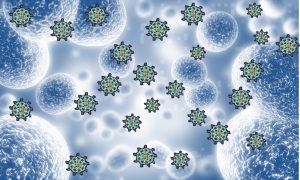
The treatment of cancer through conventional chemotherapy involves the administration of cytotoxic drugs, that destroy both cancerous and healthy cells causing severe side effects. Alternatively, use of targeted and immune therapies have limited positive effects and function in a very small range of cancers. One of the most promising forms of targeted therapy nowadays, includes specifically designed gene-based drugs that target explicitly cancer cells, at the same time leaving normal cells intact. However, despite the pioneering clinical experiments in this field, the factors that affect the mechanism of their action at the molecular level with respect to their in vivo efficacy, are still unexplained.
Pantavou Katerina, Principal Investigator of the research project entitled: «Urban Biometeorology and Planning: an integration of field surveys and weather station data for the assessment of thermal perception and related health effects towards sustainable living environments»
Within the present global climate change regime along with urbanization, the need for methodologies aiming at the improvement of the quality of life in urban areas is becoming evident. In this context, we propose the development of a new, integrated framework that integrates biometeorological, urban planning and environmental epidemiology data and methods. This project is aimed at the development of an improved methodology to simulate outdoor thermal sensation for large urban areas using weather station data, although considering micrometeorological conditions too.
The micrometeorological data of three field surveys on thermal sensation, already conducted at different sites of the wider area of Athens (Greece) will be integrated and enhanced. Additional microclimatic data will be collected from field surveys that will be conducted at selected outdoor public spaces in Athens during the proposed research project.
Papadopoulos Yiannis, Principal Investigator of the research project entitled: «Migration and strategies of development in the periphery of the “Western World” during the early Post-World War II period (Greece, Portugal / Brazil, Argentina)»

 During the 1950s, governments of countries in the periphery of the so-called “Free World” set the “modernization” of their societies as a priority, since underdevelopment was considered as a source of social and political instability. In this context, migration policies that promoted either emigration or immigration became important part of the development strategies in sending and receiving countries respectively. The huge and under populated South American developing countries such as Brazil and Argentina, looked at skilled European immigrants as a solution to their deficiencies in qualified human resources, whereas overpopulated Southern European countries tried to get rid of their “surplus” workforce, which was considered as a main factor for high unemployment, poverty and underdevelopment.
During the 1950s, governments of countries in the periphery of the so-called “Free World” set the “modernization” of their societies as a priority, since underdevelopment was considered as a source of social and political instability. In this context, migration policies that promoted either emigration or immigration became important part of the development strategies in sending and receiving countries respectively. The huge and under populated South American developing countries such as Brazil and Argentina, looked at skilled European immigrants as a solution to their deficiencies in qualified human resources, whereas overpopulated Southern European countries tried to get rid of their “surplus” workforce, which was considered as a main factor for high unemployment, poverty and underdevelopment.
Papakyriakou Athanasios & Mpakali Anastasia, Principal Investigators of the research project entitled: «ARIA – Atomic Resolution Insight into the Antigen processing machinery»


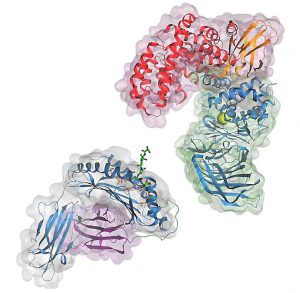 Adaptive immune responses are driven by the recognition of molecular complexes between small antigenic peptides and Major Histocompatibility Complex Class I molecules (MHCI). These complexes are recognized by T-lymphocytes which then initiate biochemical cascades until eradication of target cells. Antigenic peptides are generated intracellularly by proteolysis, loaded onto MHCI in the endoplasmic reticulum (ER) and transported to the cell surface for presentation. ER aminopeptidase 1 (ERAP1) is an ER-resident aminopeptidase that has been shown to crucially participate in generation of antigenic peptides by trimming N-terminally extended peptide precursors to mature epitopes or by over-trimming them until destruction. Many studies have exemplified the importance of ERAP1 in regulating responses against normal and diseased cells (infected/ cancerous). Accordingly, ERAP1 inhibition has proven sufficient to generate potent anti-tumor cytotoxic responses and therefore is currently a promising pharmacological target for enhancing cancer immunotherapy. ERAP1 is polymorphic and this variability has been associated to predisposition to disease (most notably autoimmunity), which has been repeatedly validated on both genetic and functional levels.
Adaptive immune responses are driven by the recognition of molecular complexes between small antigenic peptides and Major Histocompatibility Complex Class I molecules (MHCI). These complexes are recognized by T-lymphocytes which then initiate biochemical cascades until eradication of target cells. Antigenic peptides are generated intracellularly by proteolysis, loaded onto MHCI in the endoplasmic reticulum (ER) and transported to the cell surface for presentation. ER aminopeptidase 1 (ERAP1) is an ER-resident aminopeptidase that has been shown to crucially participate in generation of antigenic peptides by trimming N-terminally extended peptide precursors to mature epitopes or by over-trimming them until destruction. Many studies have exemplified the importance of ERAP1 in regulating responses against normal and diseased cells (infected/ cancerous). Accordingly, ERAP1 inhibition has proven sufficient to generate potent anti-tumor cytotoxic responses and therefore is currently a promising pharmacological target for enhancing cancer immunotherapy. ERAP1 is polymorphic and this variability has been associated to predisposition to disease (most notably autoimmunity), which has been repeatedly validated on both genetic and functional levels.
Papanikolopoulou Katerina, Principal Investigator of the research project entitled: «Mical is a novel Tau interactor that regulates its aggregation propensity»

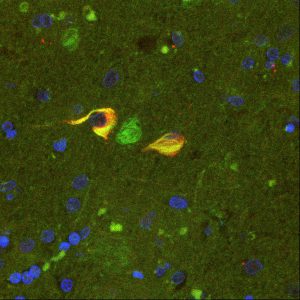 Microtubule-associated Tau is a protein that performs essential functions in healthy neurons, but forms insoluble deposits characteristic of diseases now known collectively as Tauopathies. Tauopathies encompass more than 20 clinicopathological entities, including Alzheimer’s disease (AD), Progressive Supranuclear Palsy (PSP), Pick’s disease, Corticobasal Degeneration (CBD) and Frontotemporal Dementia with Parkinsonism linked to chromosome 17 (FTDP-17) among others. Using the Drosophila adult brain as a model, we are trying to probe molecular interactions that induce Tau to become neurotoxic and possibly involved in specific intracellular signaling pathways. A series of proteomics experiments led to the unexpected identification of Drosophila MICAL (Mical) as a Tau cellular partner.
Microtubule-associated Tau is a protein that performs essential functions in healthy neurons, but forms insoluble deposits characteristic of diseases now known collectively as Tauopathies. Tauopathies encompass more than 20 clinicopathological entities, including Alzheimer’s disease (AD), Progressive Supranuclear Palsy (PSP), Pick’s disease, Corticobasal Degeneration (CBD) and Frontotemporal Dementia with Parkinsonism linked to chromosome 17 (FTDP-17) among others. Using the Drosophila adult brain as a model, we are trying to probe molecular interactions that induce Tau to become neurotoxic and possibly involved in specific intracellular signaling pathways. A series of proteomics experiments led to the unexpected identification of Drosophila MICAL (Mical) as a Tau cellular partner.
Papastefanatos George, Principal Investigator of the research project entitled: «Democratizing Visual Analytics. A Self-Service Platform for Big Data Exploration»
 Self-service visual analytics is a new paradigm, widely promoted in modern corporate environments, in which business users are enabled and encouraged to directly manipulate (explore, blend, analyze) underlying data in rich visual ways. Allowing less tech-savvy end users to make decisions based on their own queries and analyses, freeing up the organization’s information technology (IT) teams from the tedious work of data preparation. A major challenge of the Big Data era is the management of vast amounts of diverse, open datasets for analysis, by non-corporate data analysts such as research scientists, data journalists, policy makers, small SMEs and individuals. The level of difficulty in transforming a data-curious user into someone who can competently access, analyze and consume that data, is even higher in the Big Data era, making it especially burdensome for users with little or no support or expertise on data management.
Self-service visual analytics is a new paradigm, widely promoted in modern corporate environments, in which business users are enabled and encouraged to directly manipulate (explore, blend, analyze) underlying data in rich visual ways. Allowing less tech-savvy end users to make decisions based on their own queries and analyses, freeing up the organization’s information technology (IT) teams from the tedious work of data preparation. A major challenge of the Big Data era is the management of vast amounts of diverse, open datasets for analysis, by non-corporate data analysts such as research scientists, data journalists, policy makers, small SMEs and individuals. The level of difficulty in transforming a data-curious user into someone who can competently access, analyze and consume that data, is even higher in the Big Data era, making it especially burdensome for users with little or no support or expertise on data management.
Papoutsi Athanasia, Principal Investigator of the research project entitled: «Synaptic Engram of Flexible Behavior»

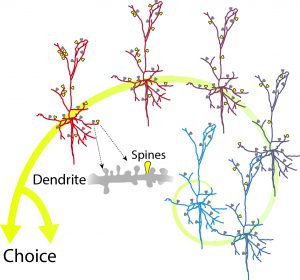 Action selection should be both stable to maximize positive outcomes and flexible to adapt in a changing environment. The dorsal prefrontal cortex (dPFC) exerts control on action selection and mediates adaptive decision making. Neuronal populations in the dPFC respond with abrupt changes in their state, following accumulative evidence for an environmental change, yet the mechanisms underlying this sudden change in neuronal dynamics remain unexplored. It is hypothesized that newly emerged spines (the locus of excitatory transmission) underlie adaptation of neural systems, while stable spines constitute part of the memory storage machinery.
Action selection should be both stable to maximize positive outcomes and flexible to adapt in a changing environment. The dorsal prefrontal cortex (dPFC) exerts control on action selection and mediates adaptive decision making. Neuronal populations in the dPFC respond with abrupt changes in their state, following accumulative evidence for an environmental change, yet the mechanisms underlying this sudden change in neuronal dynamics remain unexplored. It is hypothesized that newly emerged spines (the locus of excitatory transmission) underlie adaptation of neural systems, while stable spines constitute part of the memory storage machinery.
Pastelakos Evangelos, Principal Investigator of the research project entitled: «Firms and Competitiveness: A Novel Database of Greek Exporters and Innovators»
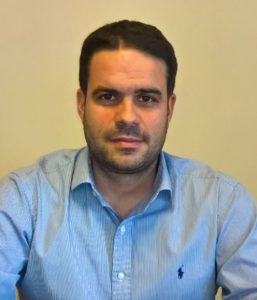 The literature on competitiveness and international trade has highlighted, in addition to traditional macroeconomic analysis, the importance of firm-level factors for exporting. Firm characteristics go beyond aggregate economic performance and aim at capturing the heterogeneity of firm performance. Exporting firms are larger, more productive and more skill intensive than non-exporting firms. These firm characteristics indicate complex trade strategies, including exporting more products, to more destinations. Notably, the ability of a firm to invest in R&D and carry out product innovation is directly related to its ability to compete in the world market place. Although improving competitiveness is a crucial issue for the Greek economy, there is little evidence on the determinants of international economic activity at the firm level. The main reason is the lack of related data and the difficulty in collecting them. The present research project will focus on Greek exporting firms and aims at studying: a) the determinants of exporting, b) the relationship between innovation and trade.
The literature on competitiveness and international trade has highlighted, in addition to traditional macroeconomic analysis, the importance of firm-level factors for exporting. Firm characteristics go beyond aggregate economic performance and aim at capturing the heterogeneity of firm performance. Exporting firms are larger, more productive and more skill intensive than non-exporting firms. These firm characteristics indicate complex trade strategies, including exporting more products, to more destinations. Notably, the ability of a firm to invest in R&D and carry out product innovation is directly related to its ability to compete in the world market place. Although improving competitiveness is a crucial issue for the Greek economy, there is little evidence on the determinants of international economic activity at the firm level. The main reason is the lack of related data and the difficulty in collecting them. The present research project will focus on Greek exporting firms and aims at studying: a) the determinants of exporting, b) the relationship between innovation and trade.
Pastras Georgios, Principal Investigator of the research project entitled: «Holographic Applications of Quantum Entanglement»
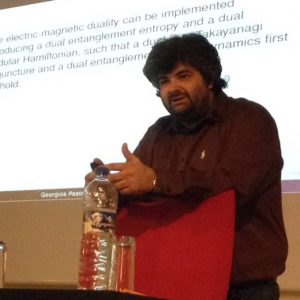
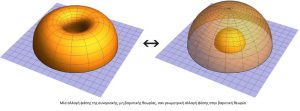 Physics is full of strongly coupled systems with theoretical interest in classical and quantum physics, such as, turbulence, the confinement problem, the quark-gluon plasma in quantum chromodynamics or the black holes in gravity. Such systems are quite difficult to be studied, since the usual mathematical methods cannot be applied. A fruitful approach for the description and study of such systems is through the establishment of a duality. These are non-trivial correspondences between interconnected pairs of theories with the weakly-coupled phenomena of the one theory being mapped to the strongly-coupled ones of the other and vice versa. A particularly interesting class of dualities is the one of holographic dualities, which connect gravitational theories to non-gravitational conformal field theories, in one less dimension.
Physics is full of strongly coupled systems with theoretical interest in classical and quantum physics, such as, turbulence, the confinement problem, the quark-gluon plasma in quantum chromodynamics or the black holes in gravity. Such systems are quite difficult to be studied, since the usual mathematical methods cannot be applied. A fruitful approach for the description and study of such systems is through the establishment of a duality. These are non-trivial correspondences between interconnected pairs of theories with the weakly-coupled phenomena of the one theory being mapped to the strongly-coupled ones of the other and vice versa. A particularly interesting class of dualities is the one of holographic dualities, which connect gravitational theories to non-gravitational conformal field theories, in one less dimension.
Patkos Theodore, Principal Investigator of the research project entitled: «Towards Socio-Cognitive Logic-based Agents»

The field of robotics is lately experiencing a paradigm shift from heavy-duty robots operating in manufacturing, well-specified areas without tight collaboration with the human worker, to robots that operate close to humans, not only in industrial spaces, but all the more towards public environments, and even inside our homes. The recently emerged field of Social Robotics is attracting a lot of attention by both academia and industry, but also by experts beyond the world of robotics, who understand that this field will directly impact the quality of life of various categories of sensitive population, such as the elderly, people with physical or certain types of mild cognitive disabilities, and children, among others. The research and societal challenges faced in this direction are of course many and admittedly expand beyond traditional robotics. From the AI research standpoint, the symbiosis of humans with robotic agents in less controlled environments introduces the need to design autonomous entities that can exhibit commonsense behavior, intuitive interaction through a plurality of communication means, planning of actions in partially observable and potentially unknown environments, and learning, in order to steadily obtain the experience to cope with unforeseen situations.
Pefani Dafni Eleftheria, Principal Investigator of the research project entitled: «Hippo pathway in genome and epigenome maintenance»

DNA damage is an ongoing threat to both our ability to faithfully transmit genetic information to our offspring, as well as our own survival. When DNA damage occurs, cells utilize complex signaling networks that mediate cell cycle arrest and repair or trigger senescence or apoptotic pathways in case of extensive, irreparable lesions. These pathways are collectively known as the DNA damage response (DDR), which consists of hierarchically-organized signaling cascades. The activation of the DDR promotes lesion recognition, modification of the surrounding chromatin environment to allow recruitment of the DNA repair machinery and ultimately the repair of the damage. Recent studies have shown that signaling pathways previously studied in cell growth or metabolism also feed in to the canonical DDR to increase the efficiency of the process. Hippo is a kinase cascade that was originally identified as a developmental pathway; however, several studies have shown that the pathway acts as a tumor suppressor, and inactivation of the cascade is linked to tumor formation and metastatic behavior.
Petrakis Spyros, Principal Investigator of the research project entitled: «Blocking the aggregation promoting ATXN1Q82-MED15 protein-protein interaction»
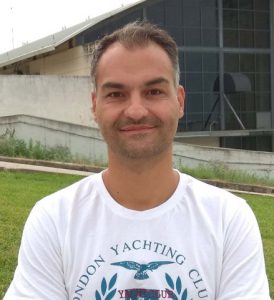 Spinocerebellar ataxia type-1 (SCA1) is an autosomal dominant and lethal neurodegenerative disorder characterized by progressive movement disorders. It belongs to the group of polyglutamine (polyQ) diseases. It is caused by trinucleotide (CAG) expansions in the coding region of ataxin-1 (ATXN1) gene resulting in polyQ chains in the relevant protein. The mutant protein misfolds into toxic oligomers and forms intranuclear aggregates that cause neurodegeneration in the cerebellum. We have previously shown that the interaction between mutant ATXN1 and MED15 promotes polyQ protein aggregation and proteotoxicity. Therefore, suppressing ATXN1-MED15 protein-protein interaction (PPI) may rescue neurons from cell death. Here, we aim to identify the exact PPI site between ATXN1 and MED15 and block it with chemical compounds having a similar structure. These compounds may also suppress polyQ protein aggregation and reduce cytotoxicity. To minimize the experimental workload, we are going to use a combination of computational and experimental techniques. First, we aim to predict the ATXN1-MED15 PPI site using a protein-protein docking algorithm.
Spinocerebellar ataxia type-1 (SCA1) is an autosomal dominant and lethal neurodegenerative disorder characterized by progressive movement disorders. It belongs to the group of polyglutamine (polyQ) diseases. It is caused by trinucleotide (CAG) expansions in the coding region of ataxin-1 (ATXN1) gene resulting in polyQ chains in the relevant protein. The mutant protein misfolds into toxic oligomers and forms intranuclear aggregates that cause neurodegeneration in the cerebellum. We have previously shown that the interaction between mutant ATXN1 and MED15 promotes polyQ protein aggregation and proteotoxicity. Therefore, suppressing ATXN1-MED15 protein-protein interaction (PPI) may rescue neurons from cell death. Here, we aim to identify the exact PPI site between ATXN1 and MED15 and block it with chemical compounds having a similar structure. These compounds may also suppress polyQ protein aggregation and reduce cytotoxicity. To minimize the experimental workload, we are going to use a combination of computational and experimental techniques. First, we aim to predict the ATXN1-MED15 PPI site using a protein-protein docking algorithm.
Polissidis Alexa Victoria, Principal Investigator of the research project entitled: «Exploring the neurodegenerative potential of chronic stress in a human alpha-synuclein overexpression model»
 An appropriate stress response is vital for homeostasis and survival; however, chronic stress is predominantly detrimental and can negatively impact the brain and behaviour. Interestingly, there is evidence of bidirectional neural and immune system communication between the gut, its microbiota (bacteria that live in the gut) and the brain and these interactions are collectively termed the “microbiome-gut-brain axis”. The present study aims to examine the effects of gene-environment interactions in neurodegeneration: the mysterious process that leads to neuronal cell death. Specifically, we will use a model of neurodegenerative vulnerability that expresses enhanced levels of the protein that builds up in Parkinson’s disease, alpha-synuclein, to assess the role of chronic stress exposure in the microbiome-gut-brain axis.
An appropriate stress response is vital for homeostasis and survival; however, chronic stress is predominantly detrimental and can negatively impact the brain and behaviour. Interestingly, there is evidence of bidirectional neural and immune system communication between the gut, its microbiota (bacteria that live in the gut) and the brain and these interactions are collectively termed the “microbiome-gut-brain axis”. The present study aims to examine the effects of gene-environment interactions in neurodegeneration: the mysterious process that leads to neuronal cell death. Specifically, we will use a model of neurodegenerative vulnerability that expresses enhanced levels of the protein that builds up in Parkinson’s disease, alpha-synuclein, to assess the role of chronic stress exposure in the microbiome-gut-brain axis.
Salvarina Ioanna, Principal Investigator of the research project entitled: «Bats and their relationship to water availability and quality in the Mediterranean sub-basin»
 Bats play an important role in ecosystems and they are threatened by climate change, degradation of their habitats and decrease of water quantity and quality. They need freshwaters for drinking and many bat species feed on emerging aquatic insects. Mediterranean freshwater systems suffer from anthropogenic influences, such as eutrophication, that can affect insect populations, water quality and quantity, and therefore bats indirectly. The relationship between bats and aquatic ecosystems is not yet well investigated in Greece.
Bats play an important role in ecosystems and they are threatened by climate change, degradation of their habitats and decrease of water quantity and quality. They need freshwaters for drinking and many bat species feed on emerging aquatic insects. Mediterranean freshwater systems suffer from anthropogenic influences, such as eutrophication, that can affect insect populations, water quality and quantity, and therefore bats indirectly. The relationship between bats and aquatic ecosystems is not yet well investigated in Greece.
Thus, the general essential aim of this project is to investigate the relationship between bats and freshwater sources in Mediterranean habitats that are prone to dryness and other effects of climate change. As social environmental consciousness is crucial for the success of conservation practices, another objective is to access and increase local public awareness of ecosystem services provided by bats.
Sarris Michalis, Principal Investigator of the research project entitled: «The role of mesenchymal-derived IGF1 in intestinal homeostasis and the promotion of colitis and colitis-associated cancer»
The aim of this project is to identify the mechanisms underlying fibroblast function, both in intestinal homeostasis and in colitis and colorectal carcinogenesis. It will address the role of certain growth factors produced by fibroblasts aiming to clarify the molecular mechanisms they induce on themselves (autocrine action) and on adjacent epithelial and stem cells. Our hypothesis is that during acute or chronic intestinal damage, fibroblasts are activated and secrete IGFs, which contribute to intestinal inflammation and carcinogenesis. These specific mediators, having been emerged from our preliminary results, could lead to an altered epithelial function in terms of uncontrolled cell proliferation, promotion of their invasion through epithelial to mesenchymal transition and deregulation of their cellular energetics
Savvaki Maria, Principal Investigator of the research project entitled: «The role of Autophagy in the development and maintenance of Myelin»

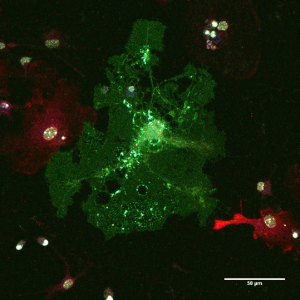 The proposed study aims to investigate the significance of autophagy in the CNS, focusing on myelin-producing glia. Myelin provides mammals with an evolutionary privilege that insulates the axon and ensures the rapid and efficient propagation of action potentials along its length. Its disruption is a common feature of demyelinating neurodegenerative diseases as well as aging and age-related disorders in humans. In all cases, myelin decline is associated with disrupted neuronal conduction and motor/cognitive impairment. Recent studies implicate defective regulation of autophagy in demyelinating disorders in humans and rodent models, but little is known about the underlying mechanism. Since CNS demyelinating pathologies comprise a major cause of disability worldwide and remain untreatable, it is vital to investigate the underlying mechanisms.
The proposed study aims to investigate the significance of autophagy in the CNS, focusing on myelin-producing glia. Myelin provides mammals with an evolutionary privilege that insulates the axon and ensures the rapid and efficient propagation of action potentials along its length. Its disruption is a common feature of demyelinating neurodegenerative diseases as well as aging and age-related disorders in humans. In all cases, myelin decline is associated with disrupted neuronal conduction and motor/cognitive impairment. Recent studies implicate defective regulation of autophagy in demyelinating disorders in humans and rodent models, but little is known about the underlying mechanism. Since CNS demyelinating pathologies comprise a major cause of disability worldwide and remain untreatable, it is vital to investigate the underlying mechanisms.
Siskou Olga, Principal Investigator of the research project entitled: «SUN 4 Patients (Stroke Units Necessity for Patients) – Improving Stroke care in Greece in terms of management, costs and health outcomes »
 It is a prospective cohort multicenter study of patients with first ever acute stroke (N=1,000). All patients will be followed for three months. Moreover, a sub-group of the 300 firstly recruited patients will be followed for a year to obtain data on post hospital health and social needs, health services utilization (medication, rehabilitation, outpatient visits) and productivity loss. Actually, it is the first attempt to measure the value of stroke care in Greece, and it is anticipated to enable improvements in “effectiveness and efficiency”, via reallocation of spending among types of services (e.g. rehabilitation instead of in-patient), “establishment of specialized social support services, development of a national network of specialized stroke units” all over the country, “minimization of non-value adding practices” (e.g. overuse of diagnostic imaging), “adoption of evidence based practices”, “shortening of care cycle time” etc.
It is a prospective cohort multicenter study of patients with first ever acute stroke (N=1,000). All patients will be followed for three months. Moreover, a sub-group of the 300 firstly recruited patients will be followed for a year to obtain data on post hospital health and social needs, health services utilization (medication, rehabilitation, outpatient visits) and productivity loss. Actually, it is the first attempt to measure the value of stroke care in Greece, and it is anticipated to enable improvements in “effectiveness and efficiency”, via reallocation of spending among types of services (e.g. rehabilitation instead of in-patient), “establishment of specialized social support services, development of a national network of specialized stroke units” all over the country, “minimization of non-value adding practices” (e.g. overuse of diagnostic imaging), “adoption of evidence based practices”, “shortening of care cycle time” etc.
Skantzakis Emmanouil, Principal Investigator of the research project entitled: «Generation and applications of intense circularly-polarized extreme ultraviolet radiation»
 The generation of extreme ultraviolet (XUV) pulses with circular or elliptical polarization by using table-top sources is currently a hot research topic, due to the important applications of these pulses. Circularly-polarized XUV radiation is extensively used for the analysis of the structural, electronic and magnetic properties of matter employing various experimental techniques: e.g. photoelectron circular dichroism for the investigation of chiral molecules, angle-resolved photoemission spectroscopy (ARPES) with circularly-polarized XUV pulses, and X-ray magnetic circular dichroism (XMCD) spectroscopy for the study of magnetic materials. Synchrotron radiation is typically used for these applications. Table-top sources of pulses in the XUV with circular polarization and ultrashort duration (from tens of femtoseconds to hundreds of attoseconds) would produce an enormous boost for the investigation of ultrafast processes involved in chirality-sensitive light–matter interactions.
The generation of extreme ultraviolet (XUV) pulses with circular or elliptical polarization by using table-top sources is currently a hot research topic, due to the important applications of these pulses. Circularly-polarized XUV radiation is extensively used for the analysis of the structural, electronic and magnetic properties of matter employing various experimental techniques: e.g. photoelectron circular dichroism for the investigation of chiral molecules, angle-resolved photoemission spectroscopy (ARPES) with circularly-polarized XUV pulses, and X-ray magnetic circular dichroism (XMCD) spectroscopy for the study of magnetic materials. Synchrotron radiation is typically used for these applications. Table-top sources of pulses in the XUV with circular polarization and ultrashort duration (from tens of femtoseconds to hundreds of attoseconds) would produce an enormous boost for the investigation of ultrafast processes involved in chirality-sensitive light–matter interactions.
Sourdis Christos, Principal Investigator of the research project entitled: «Singularities in nonlinear elliptic problems»
 We propose to study the emergence of singularities in a class of nonlinear singularly perturbed elliptic partial differential equations. More precisely, our interest will be on the presence of corner singularities in the singular limit profile (corner layers) or its level sets (junctions). For mathematicians, these points (or higher dimensional manifolds) are particularly exciting. We will study such phenomena in a variety of problems of high current interest, arising in Bose-Einstein condension, combustion theory, geometry, phase transitions and spatial ecology. Even though at first glance these problems may seem to be otherwise unrelated, they are selected so that the study of one may benefit the other.
We propose to study the emergence of singularities in a class of nonlinear singularly perturbed elliptic partial differential equations. More precisely, our interest will be on the presence of corner singularities in the singular limit profile (corner layers) or its level sets (junctions). For mathematicians, these points (or higher dimensional manifolds) are particularly exciting. We will study such phenomena in a variety of problems of high current interest, arising in Bose-Einstein condension, combustion theory, geometry, phase transitions and spatial ecology. Even though at first glance these problems may seem to be otherwise unrelated, they are selected so that the study of one may benefit the other.
Spanakis G. Emmanouil, Principal Investigator of the research project entitled: «DAPHNE – Resilient network services for critical mHealth applications»

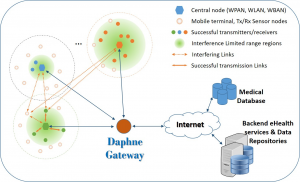 Future mHealth informatics rely on innovative technologies and systems for transparent and continuous collection of evidence based medical information at anytime, anywhere, despite coverage and availability of communication means. This emerging critical infrastructure is influenced by factors such as biomedical and clinical incentives, advances in mobile telecommunications, information technology developments, and the socioeconomic environment. This cross dependency has led to concerns about reliability and resilience of current network deployments and hence it is imperative that communication networks must be designed to adequately respond to failures especially in a cloud, mobile, IoT/WoT environment that have traditional boundaries.
Future mHealth informatics rely on innovative technologies and systems for transparent and continuous collection of evidence based medical information at anytime, anywhere, despite coverage and availability of communication means. This emerging critical infrastructure is influenced by factors such as biomedical and clinical incentives, advances in mobile telecommunications, information technology developments, and the socioeconomic environment. This cross dependency has led to concerns about reliability and resilience of current network deployments and hence it is imperative that communication networks must be designed to adequately respond to failures especially in a cloud, mobile, IoT/WoT environment that have traditional boundaries.
Spyropoulos Fotios, Principal Investigator of the research project entitled: Hoaxes and dissemination of false information. Research on the (in)security of false information online and the technical / financial dimension of the phenomenon. Legal treatment and ‘de lege ferenda’

This project refers to the criminal and criminological approach of the phenomenon of false information dissemination on the internet and social media, in the form of hoaxes, and the provision reformation of article 191 of the Greek Penal Code, regarding the dissemination of false information online.
Stamouli Eirini, Principal Investigator of the research project entitled: Corruption and state-corporate crime: the example of the health sector
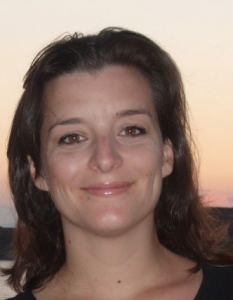
The research focuses on the criminological investigation of the “high corruption” phenomenon in the health sector in Greece. The research aims to analyze the processes, practices and methods through which phenomena of high corruption in the health sector are manifested, with a central assumption that these phenomena are not occasional and isolated manifestations of white-collar crime, but phenomena of systemic and permanent character.
Sygouni Varvara, Principal Investigator of the research project entitled: Effect of Pore Surface Wettability on Mineral Scaling, an μFluidic approach
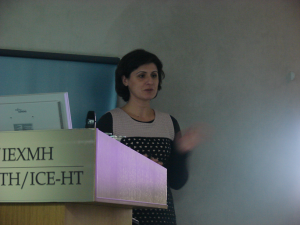
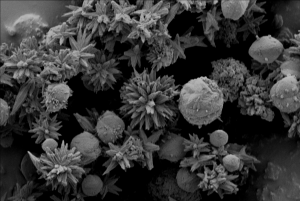
Multiphase flow processes taking place during Enhanced Oil recovery, CO2 or gas storage, geothermal energy production and utilization, membrane filtration processes etc., are usually accompanied by undesirable phenomena of scaling. There are cases in which controlled precipitation of sparingly soluble salts is desired, as in waterproofing of underground structures, prevention of soil erosion using consolidation, in biomaterials etc.
Takavakoglou Vasileios, Principal Investigator of the research project entitled: Floating wetlands for marine water pollution control in the Mediterranean Sea (ATLANTIS)
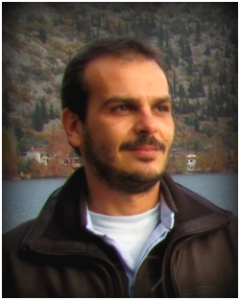

The Mediterranean Sea is considered to be a high risk area of water pollution. The sea is a major oil transportation route and up to one million tons of crude oil is discharged annually from accidental spills, illegal bunkering, cleaning practices, and inadequate port facilities. Furthermore, it has a dense network of maritime transport with more than 450 ports, hosts more than 20.000 fish-farms and receives considerable amounts of pollutants from urban, industrial and agricultural activities. Floating Wetlands (FW) are the latest development of constructed wetlands, as eco-friendly systems for pollution control.
Tomasello Riccardo, Principal Investigator of the research project entitled: Theoretical Understanding of static and dynamic properties of SKYrmions: towards a skyrmion-based technology
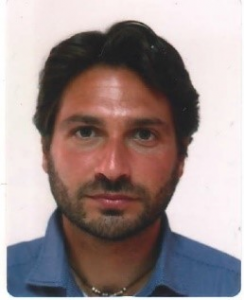
In our information-everywhere society with ubiquitous ICT devices, technologies that can match the increasing demand for power efficient, high density, high speed information processing and storage are needed. In this project, magnetic skyrmions, the smallest possible topological perturbation to a uniform magnetic configuration, have been identified as the building blocks for such a technology.
Tsagarakis Konstantinos, Principal Investigator of the research project entitled: MESOpelagic fish: Biology, Ecological role and Distribution of a disregarded trophic link (MesoBED)
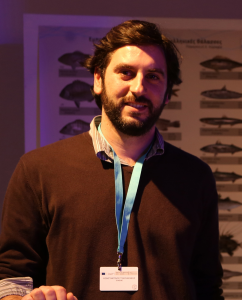
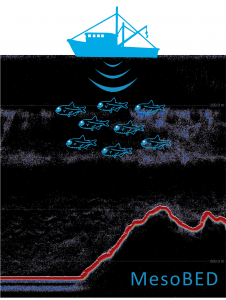
Mesopelagic fish constitute the most abundant vertebrate group in the marine environment. They are small species inhabiting the mesopelagic zone (100-1000 m), while several species perform Diel Vertical Migrations (DVM). Together with other organisms they form Deep Scattering Layers (DSL) detected by echosounders.
Tsakmakidis L. Kosmas, Principal Investigator of the research project entitled: Quantum self-organized criticality and nonequilibrium light localization
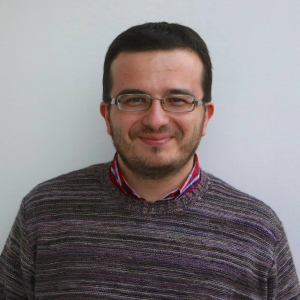
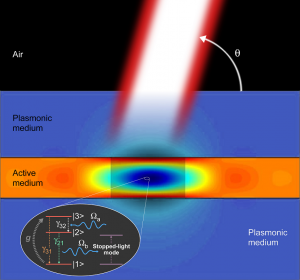
The ability of many types of complex, nonequilibrium systems to spontaneously, without any external agent, arrange their components in non-random manners and develop structures and patterns is a ubiquitous phenomenon in natural and life sciences, from biological systems and neural networks to soft-matter physics and nanoscience.
Tsakos Michail, Principal Investigator of the research project entitled: Synthetic and biological studies of the antibacterial antitumour natural product oleamycin A and structural analogues

Oleamycin A is a macrocyclic lipodepsipeptide isolated in 2014 from Streptomyces sp. (strain Lv20-58) and was found to exhibit pronounced antimicrobial activity in vitro against a panel of Gram-positive bacteria, and potent cytotoxicity against the HCT-116 human colon carcinoma cell line with an IC50 in the low nanomolar range (6.5 ng/ml). Structurally, oleamycin A is characterized by a complex architecture comprising a hexadepsipeptidic macrocyclic core and a polyketide side chain, while its absolute configuration has yet to be determined.
Tsoumakidou Maria, Principal Investigator of the research project entitled: Targeting human Wnt1 via siRNA nanoparticles to boost dendritic cell vaccination against lung cancer neoantigens
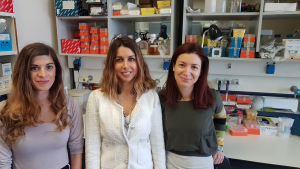
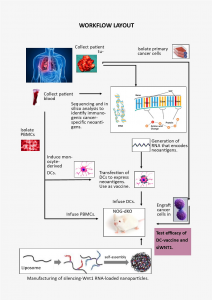
Lung cancer is the world’s leading cause of cancer death. Lung cancers have a particularly high number of somatic mutations. Peptides containing these mutations could be immunogenic (neoantigens). A crucial need has arisen to create vaccines that effectively mobilize neoantigen-specific immunity. Dendritic cells (DCs) are the natural agents for antigen delivery upon vaccination trials.
Tsoutsou Dimitra, Principal Investigator of the research project entitled: 2D crystalline thin films with non-trivial topology

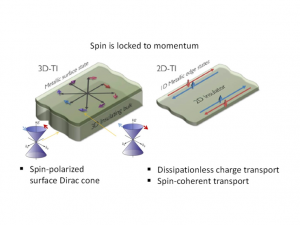
The Nobel Prize in Physics 2016 was awarded to the theoretical discoveries of topological phase transitions and topological phases of matter, underlying the remarkable importance of such materials for both fundamental research as well as for practical applications. In addition, the advent of graphene has generated an enormous interest in a number of other 2D crystals (silicene, germanene, MX2), creating the prospect for exciting new versatile applications.
Tzeranis Dimitrios, Principal Investigator of the research project entitled: Neuroprotective, Neurogenic Implants for CNS Injury Treatment

Traumatic central nervous system (CNS) injury is a devastating neurological disorder that affects the lives of thousands of individuals around the world. The spontaneous response to wound healing initiated by traumatic CNS injury leads to neurological deficit, disability, pain, and poor quality of life. Despite significant research efforts, traumatic CNS injury remains an untreatable condition, with significant societal and economic impact.
Tzounakas Vasileios, Principal Investigator of the research project entitled: Storability and Post-transfusion Performance of Erythrocytes from beta-Thalassemia minor Donors


Effective ex vivo storage of red blood cells (RBCs) is an essential requirement for medical practice. However, stored RBCs undergo a series of time-dependent physiological, structural and biochemical alterations (the “RBC storage lesion”), which are only reversible to some extent post transfusion. RBC storage lesion is probably related to the in vivo recovery of RBCs as well as to some of the adverse post-transfusion effects.
Velesiotis Dimitrios, Principal Investigator of the research project entitled: Low-Cost Carbon Nanotubes Photodetectors ($CNTPD)


Photodetectors are devices that measure the intensity of electromagnetic wave radiation in a band around a certain wavelength by absorbing the corresponding photons and transforming them to another measurable quantity, usually current or temperature change. They have numerous applications extending in diverse fields like research and space exploration/observation, national security and military, infrastructure/public safety, health and optical communications.
Veneti Zoe, Principal Investigator of the research project entitled: Epigenetic Regulation of Intestinal Stem Cells in Drosophila

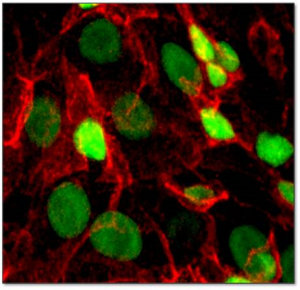
Tissue stem cells can transition into higher proliferative states and transform into cancer stem cells depending on the interactions between genetic, epigenetic and environmental factors, but the mechanisms are still largely unknown. Although mammalian intestinal stem cell (ISC) biology has gained tremendous progress in recent years, the complexity of the mammalian gastrointestinal tract, posts strong barriers to the understanding of these interactions.
Vergadi Eleni, Principal Investigator of the research project entitled: The role of phagocyte activation and autophagy in the management of neonatal sepsis
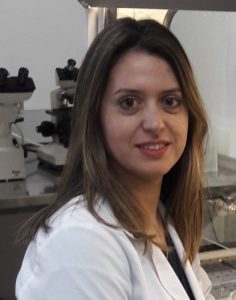
Sepsis is the host’s overwhelming and life-threatening response to infection. In the neonatal period, sepsis is responsible for substantial morbidity, mortality and long-term neurodevelopmental sequelae. Group B Streptococcus (GBS) is responsible for the majority of sepsis and meningitis cases in infants less than 3 months old worldwide. The “immaturity” of neonatal innate immune response is the major cause of neonatal susceptibility to infection.
Verret Frédéric, Principal Investigator of the research project entitled: RNA Silencing in Diatoms (RADIO)
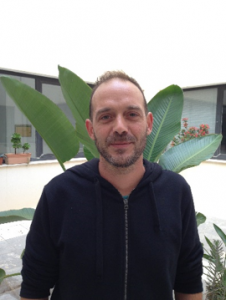
RNA silencing is a conserved mechanism of regulation of gene expression mediated by small RNAs (sRNAs) and key proteins including DCR, AGO and RdRP. RNA silencing has been shown to play pivotal roles in growth and development, maintenance of genome integrity via repression of transposable elements and transgenes, defense against virus, and response to abiotic stressors.
Verykokakis Mihalis, Principal Investigator of the research project entitled: Regulation of innate T cell fates by ID3 and its potential target genes, LEF1 and BCL6

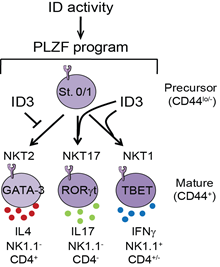
CD1d-restricted, lipid-reactive Natural Killer T (NKT) cells constitute a prototypical population of innate-like T lymphocytes that share common developmental pathways with conventional T cells. Innate lymphocyte effector programs are “hard-wired” during development prior to foreign antigen exposure, in sharp contrast to conventional T cells. Their poised state allows NKT cells to produce a vast amount of various cytokines rapidly after activation, thereby influencing the functions of a number of innate and adaptive immune cells and orchestrating the early phases of an immune response.
Vlachos Christos, Principal Investigator of the research project entitled: Selecting wh-Questions: Integrating Theoretical with Experimental and Applied Linguistics

The objective of this research project is to take a newly developed, and promising, theoretical approach to clausal complementation, and extend it to new complement types, and in doing so, determine how best to develop and extend the approach. The core theoretical hypothesis to be investigated is whether the selection of an interrogative wh-clause can reduce to an instance of nominalization, or if not, why.
Voskos Ioannis, Principal Investigator of the research project entitled: Everyday life in Cypriot communities of the 5th and 4th millennia B.C.: household and economy
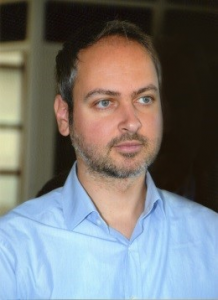
In this Project an innovative approach of selected published and unpublished material will be employed, based on the idea of socio-cultural development via internal factors of change. More specifically, we will attempt to approach several aspects of the cultural phenomenon in a holistic manner, focusing on everyday life of Cypriot social groups during the 5th and 4th millennia B.C. The temporal space of this study includes the Ceramic Neolithic phase (c. 5000-4000/3900 B.C.), the Early Chalcolithic (c. 4000/3900-3500 B.C.) and the Middle Chalcolithic periods (c. 3500-2800 B.C.).
Xenitidou Maria, Principal Investigator of the research project entitled: From Grexit to Brexit: interrogating notions of belonging and identity in Greece and the UK
The project aims to cross-examine understandings of human mobility and belonging in the UK and Greece, as well as the categories that are made relevant and implicated in this process. This is inspired by two crucial and topical questions: “who belongs where” within the national and EU contexts; “who benefits and who is left out” from the EU integration regime. These are deemed important for many reasons: for the integration regimes employed top-down within the UK and Greece; for the implications they may bear for the freedom of movement and the welfare state, e.g. in view of the recent referendum outcome in the UK; for the welfare of movers and non-movers; and for the EU project as a whole.
Yiotis Andreas, Principal Investigator of the research project entitled: Micro-Macro scale couplings in reactive transport processes in porous materials; realistic 3D experiments towards rigorous upscaled models

The study of transport phenomena in soils and porous materials is an active field of research in applications of significant scientific and technological interest. Such processes include flow, mass and heat transfer in traditional applications related to the exploitation of the earth’s natural energy resources (e.g. Enhanced Oil Recovery and Geothermal Energy Production), but also in a series of recently identified major engineering challenges of the 21st century, such as technologies related to sustainable development and climate-change mitigation strategies (e.g. geologic carbon sequestration and the management of groundwater aquifers).
Zompra A. Aikaterini, Principal Investigator of the research project entitled: Illumination of critical structural changes of the enzyme/receptor of diatomic gases involved in cardiovascular diseases
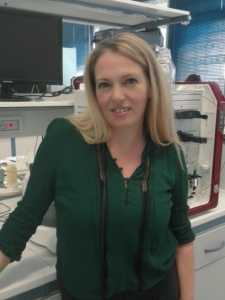
This proposal aims at the enlightening of H-NOX domain of soluble guanylate cyclase (sGC), the NO (nitric oxide) sensor that is responsible for vasodilation and neurotransmission in mammals. The NO principal receptor (sGC) is an enzyme of enormous interest and has been an attractive target for drug discovery since sGC has been implicated in an expanding number of physiological processes and diseases. sGC is composed of two homologous subunits, α and β and the architecture of each consists of four domains. The H-NOX domain of β1 subunit has the ability to bind a single heme.

